Searching for a Spotted Bat: Northern Arizona
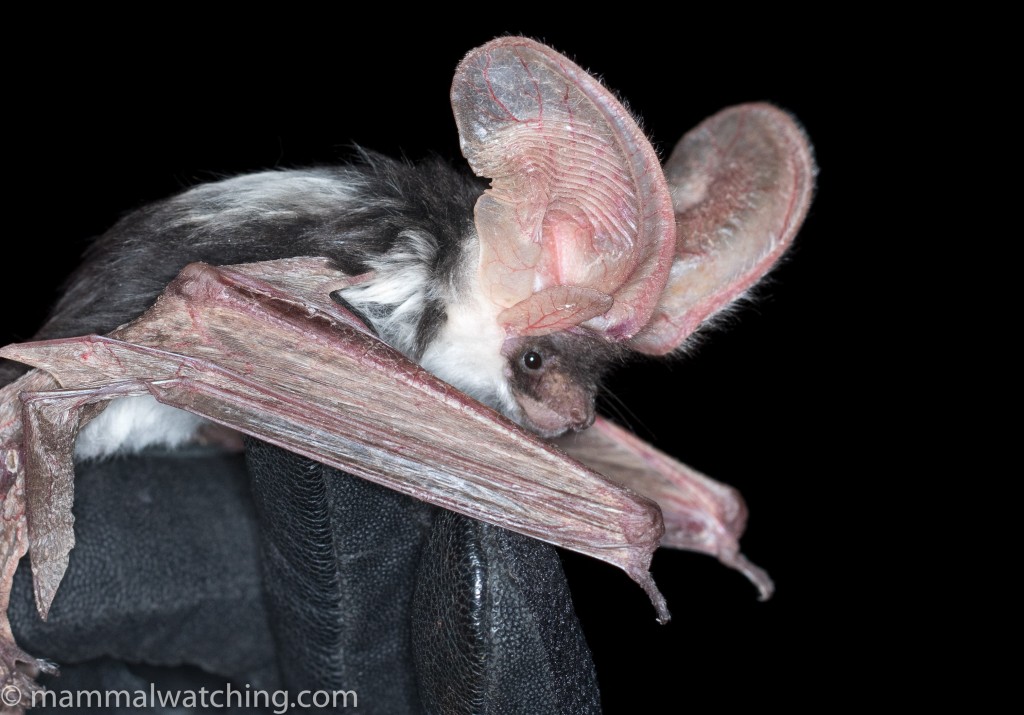
Spotted Bat, Euderma maculatum
Spotted Bats are one of the rarest and hardest to catch bats in the USA. They are also arguably one of the most impressive bats in the world. And the species has been on my Top 21 Mammals To See list since I moved to the USA 6 years ago. In fact they stayed on the list even after I saw them in flight last year: this is a species you want to get up close and personal with. So when Fiona Reid told me she was thinking of organising a trip to try to catch them I signed up quicker than you can Euderma maculatum.
If the prospect of a bunch of new bats wasn’t enough, this was also more worthwhile than the usual mammal trip: the proceeds would go towards supporting Jose Gabriel Martinez, legendary Nicaragua Yapok catcher, who started his doctorate in Northern Arizona University at the start of the year. Was this the first ever mammal watching benefit gig? Jose’s supervisor, Professor Carol Chambers, is the world’s foremost Spotted Bat guru, so naturally she and Fiona organised the trip and arranged it to coincide with the very end of the dry season when captures would be most likely.
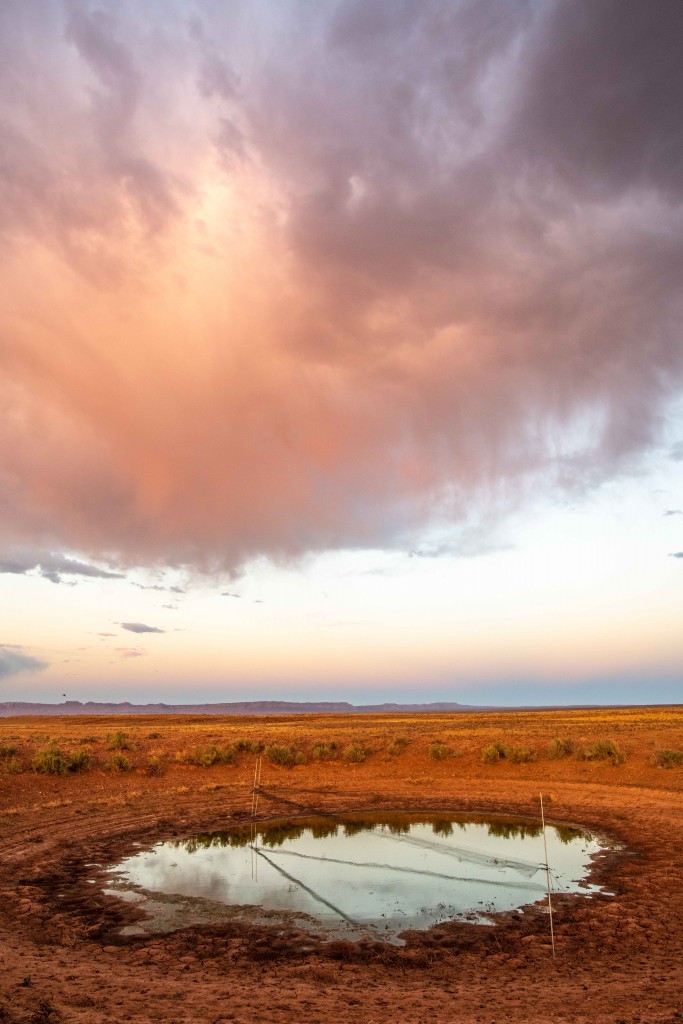
Mist netting. Photo Charles Hood
In early July a dozen or so of us met up in Flagstaff for several nights of batting. The group included mammalwatching.com regulars Charles Hood, Steve Morgan and Venkat Sankar. My son Patrick came along too, though he was far more excited at the prospect of Black Widows and Sun Spiders than the bats. Yes I often considered adoption, but would his mother listen to me?
Tuscon: Sweetwater Wetlands
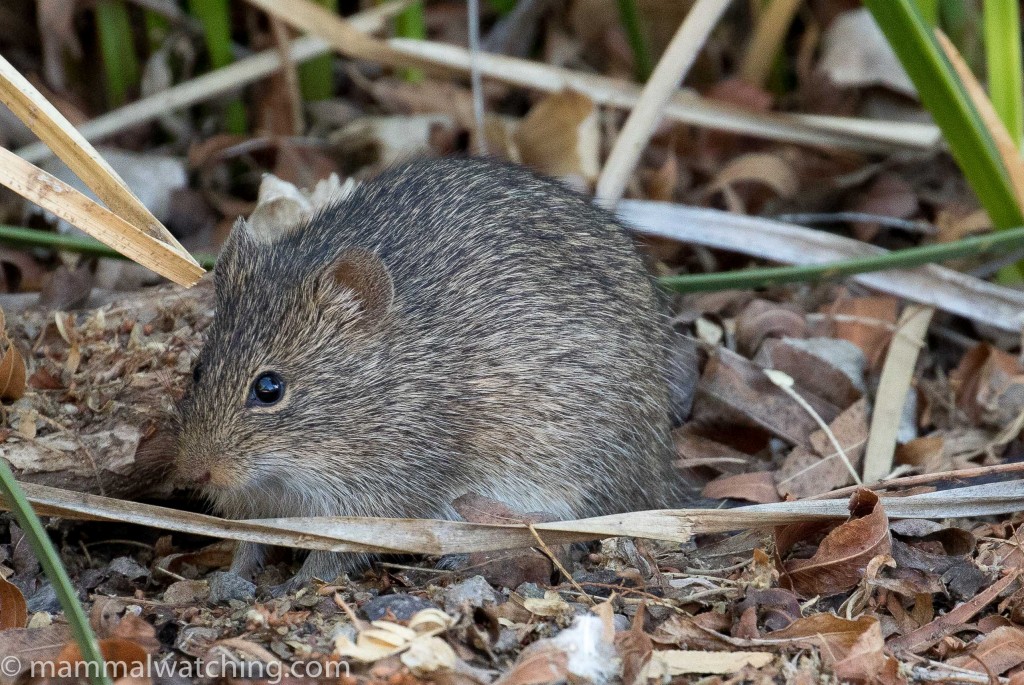
Arizona Cotton Rat, Sigmodon arizonae
My first stop was a quick detour to Sweetwater Wetlands in Tucson. I visited here in 2013 but didn’t see an Arizona Cotton Rat, reputedly common in the park. I had more luck this time and saw one or two animals within 30 minutes of arriving at 6 a.m.
I also saw a bunch of Desert Cottontails, a couple of Black-tailed Jackrabbits and an insomniac Raccoon.
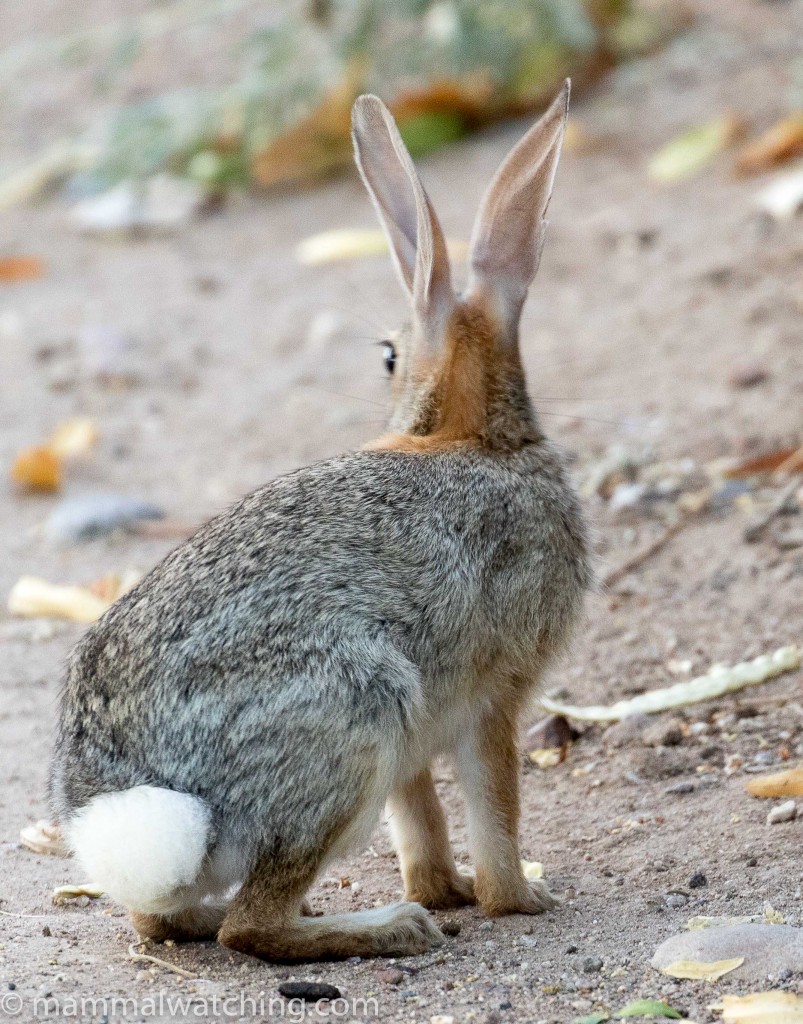
Desert Cottontail, Sylvilagus audubonii
When I got back to the small parking area, a group of Round-tailed Ground Squirrels were active at 8 a.m.
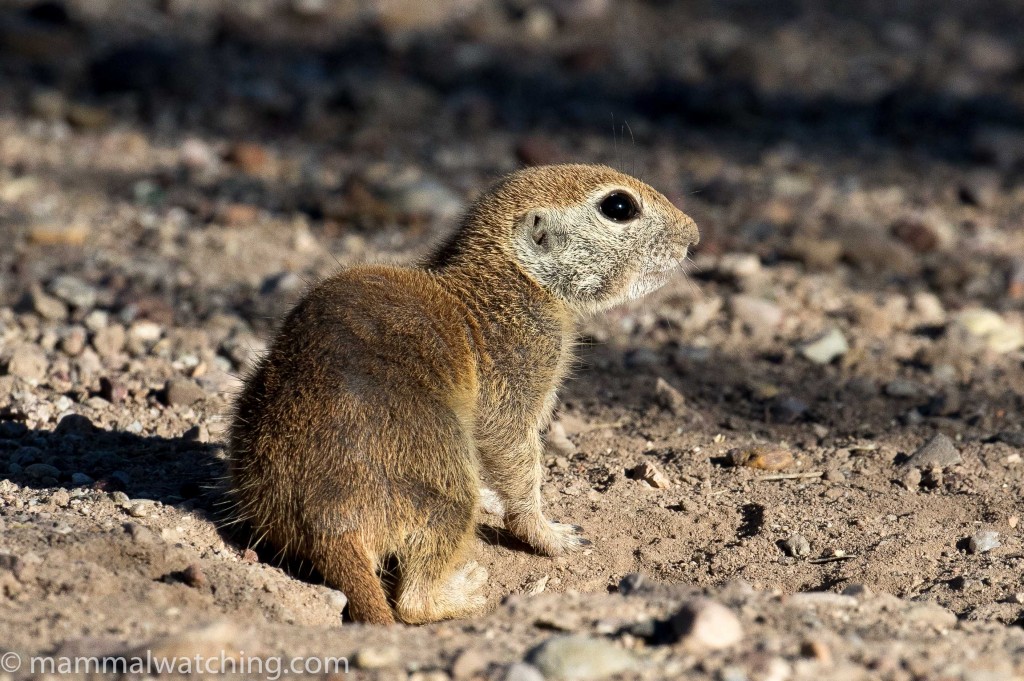
Round-tailed Ground Squirrel, Xerospermophilus ereticaudus
Flagstaff
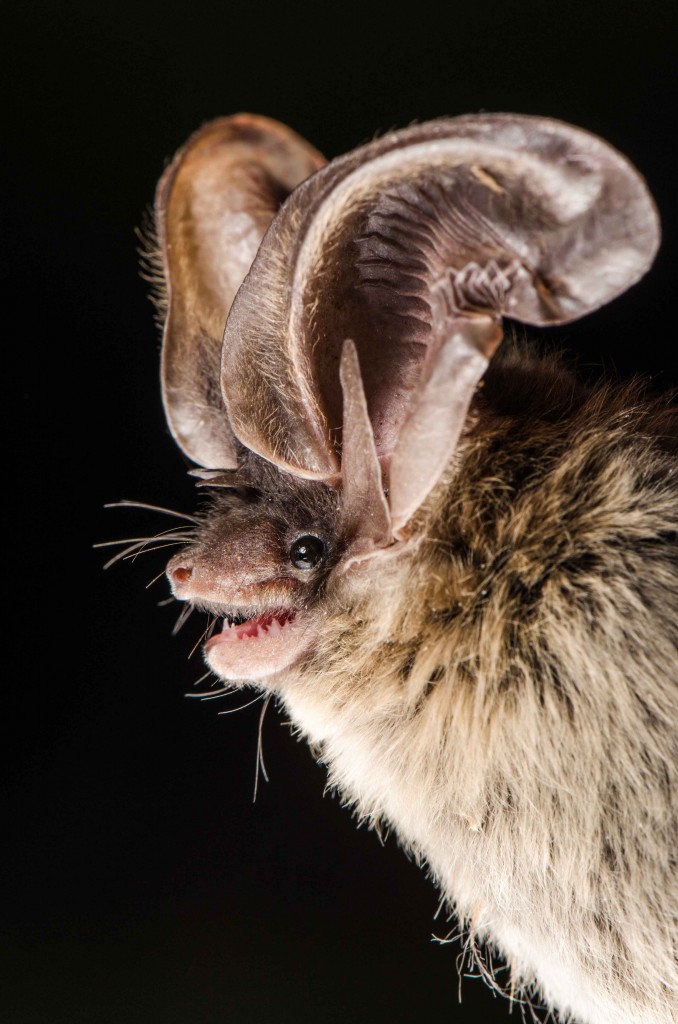
Allen’s Big-eared Bat, Idionycteris phyllotis. Photo Jose Gabriel Martinez.
The organised bit of the trip started in Flagstaff, with a night’s mistnetting about an hour out of town, over a small pond in open conifer forest. We’ve been asked not to give details of any of the locations.
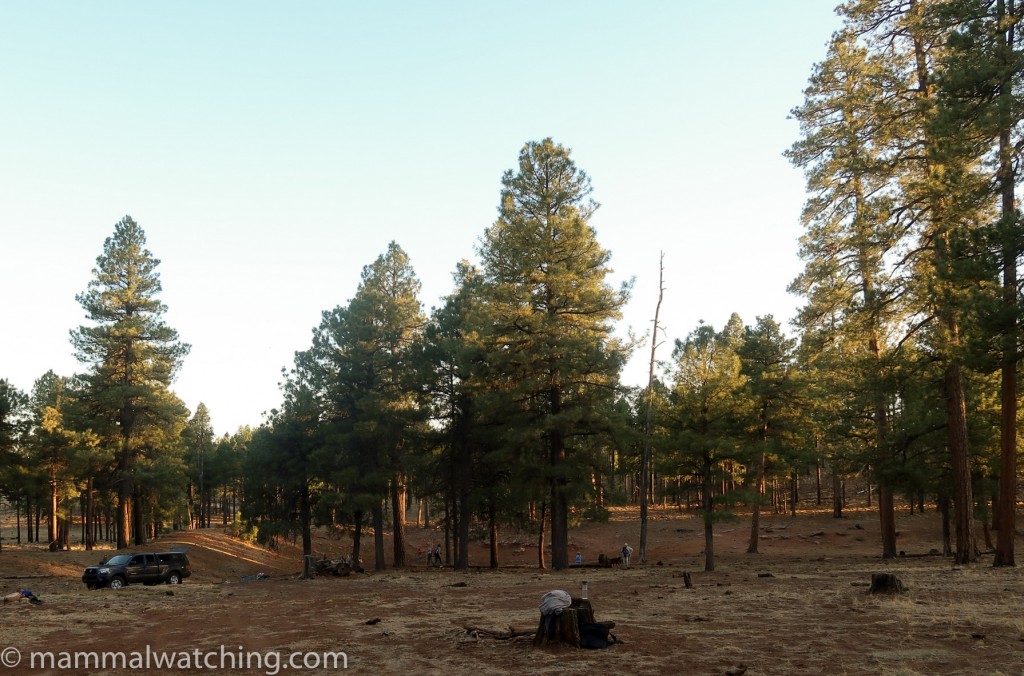
Netting site
It was a fabulous first night. We caught over 100 animals, from ten species, six of which were new for me. The netting was dominated by three species: Arizona Myotis, Fringed Myotis and Big Brown Bats.

Arizona Myotis, Myotis occultus
We caught 28 Arizona Myotis, a lifer for me.
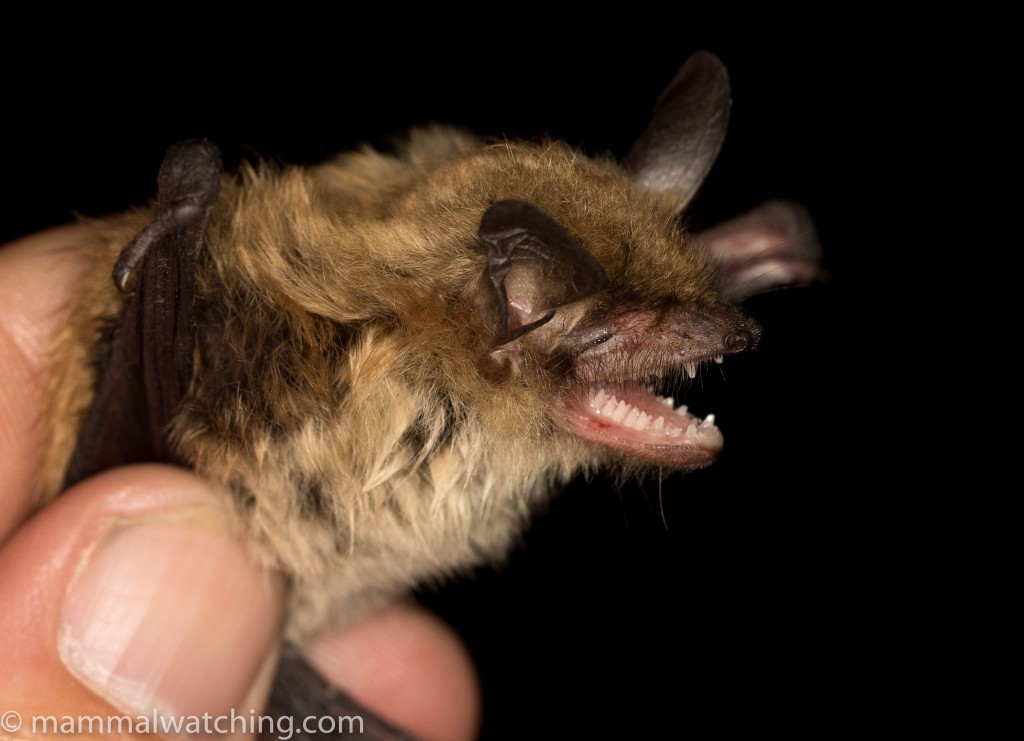
Fringed Myotis, Myotis thysanodes
We caught 40 Fringed Myotis, another lifer.
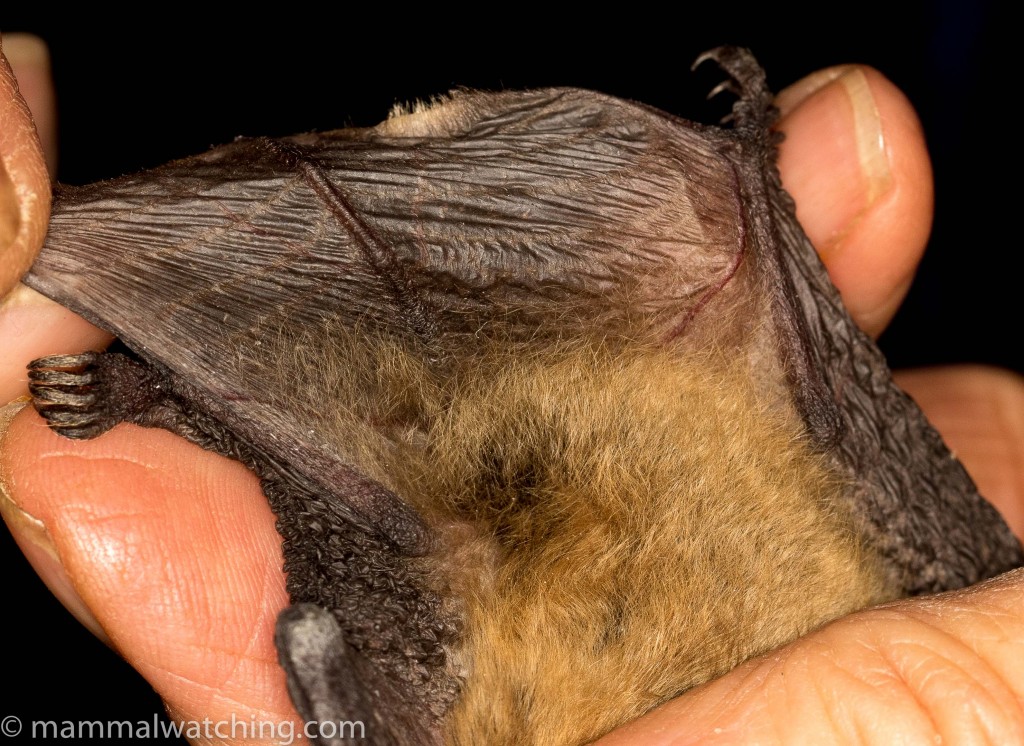
Fringed Myotis, Myotis thysanodes: Note the fringe of fure on the edge of the tail membrane.
The fringe of hair on the edge of the tail membrane is diagnostic.
And we got 30 Big Brown Bats.
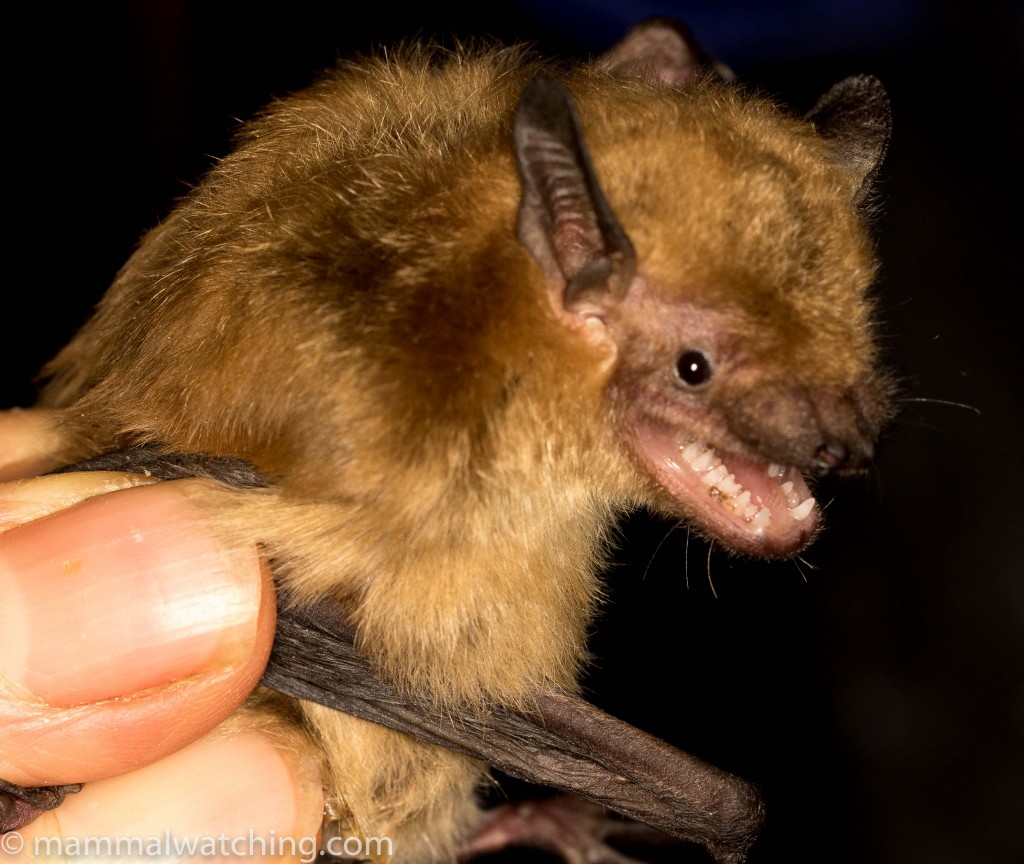
Big Brown Bat, Eptesicus fuscus
The only other species we caught more than one of were three Silver-haired Bats. Yet another lifer.
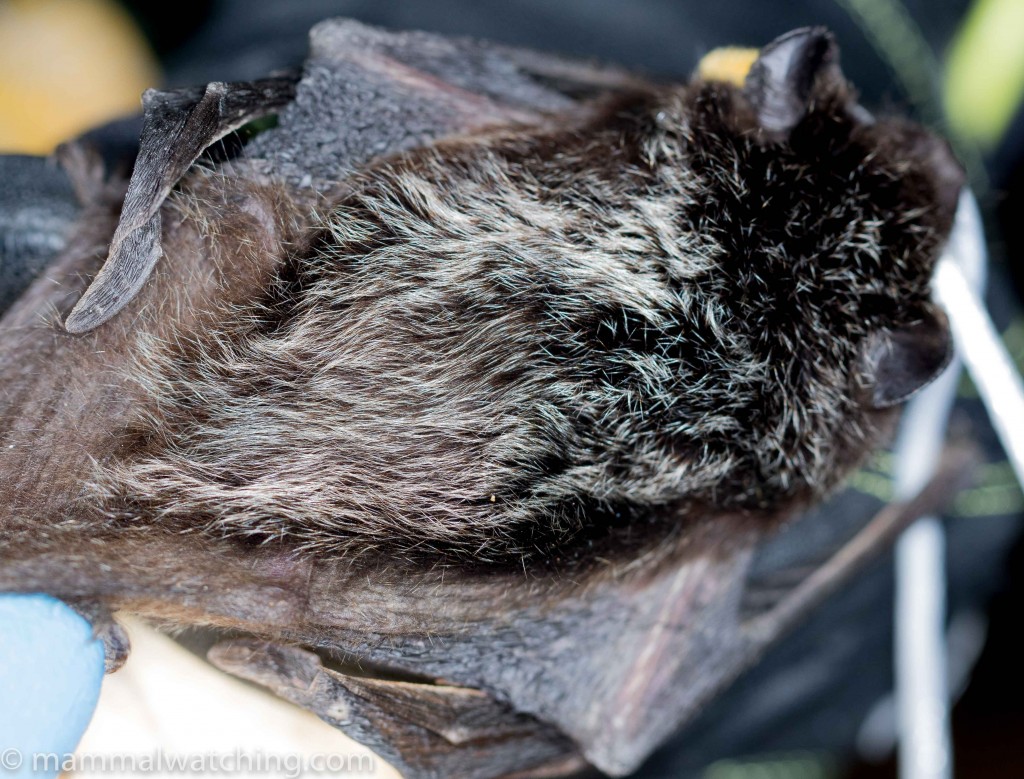
Silver-haired Bat, Lasionycteris noctivagans
We caught singles of another six species.
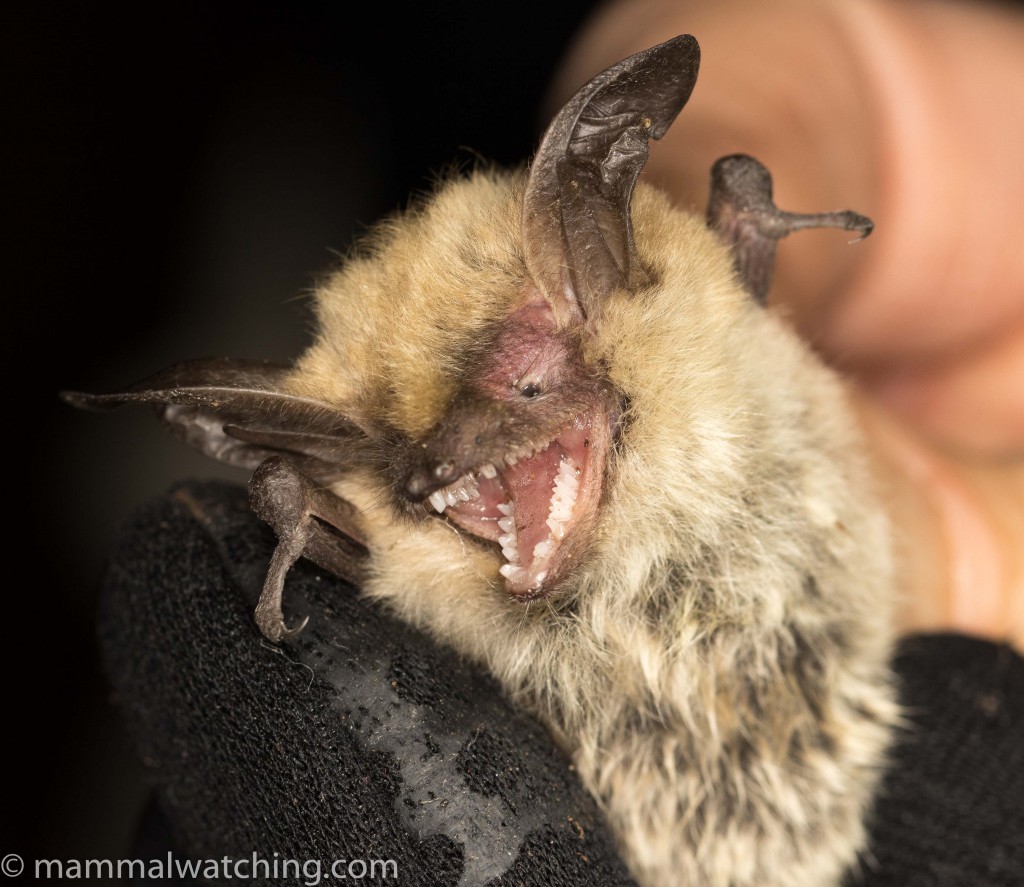
Southwestern Myotis, Myotis auriculus
This Southwestern Myotis was the only one of the trip.
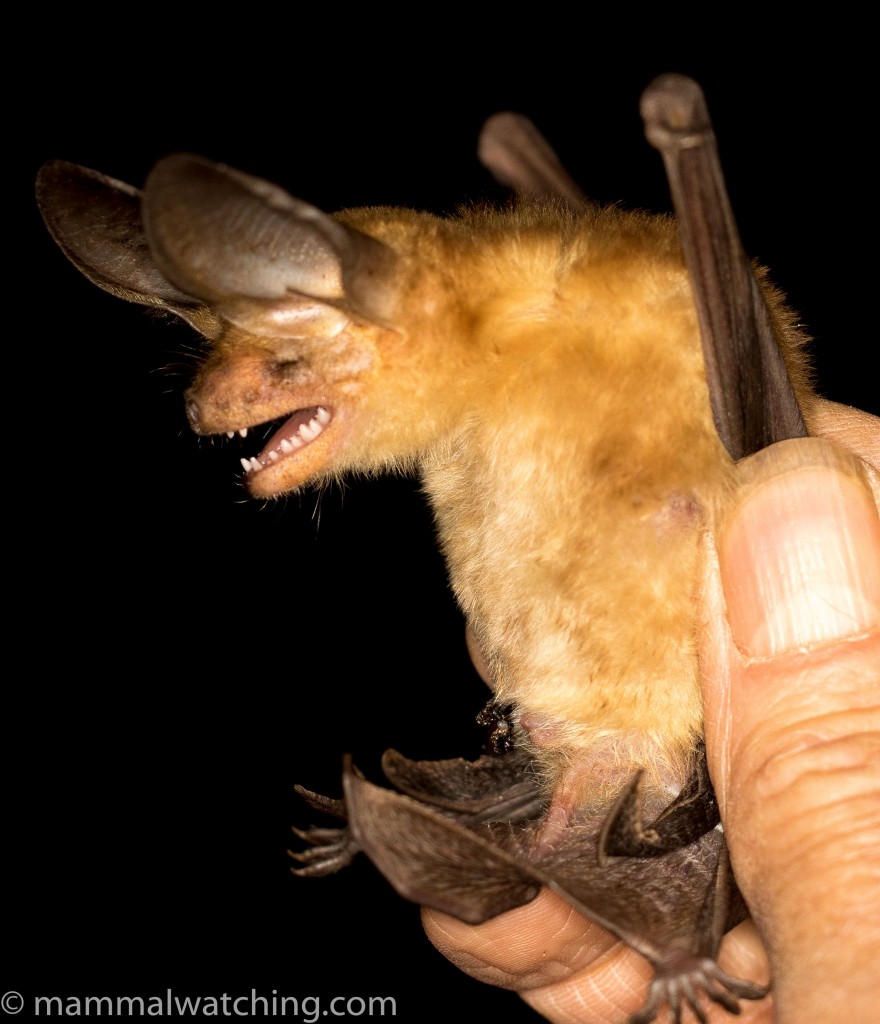
Pallid Bat, Antrozous pallidus
One of several Pallid Bats we caught over four nights’ netting. These bats are scorpion specialists.
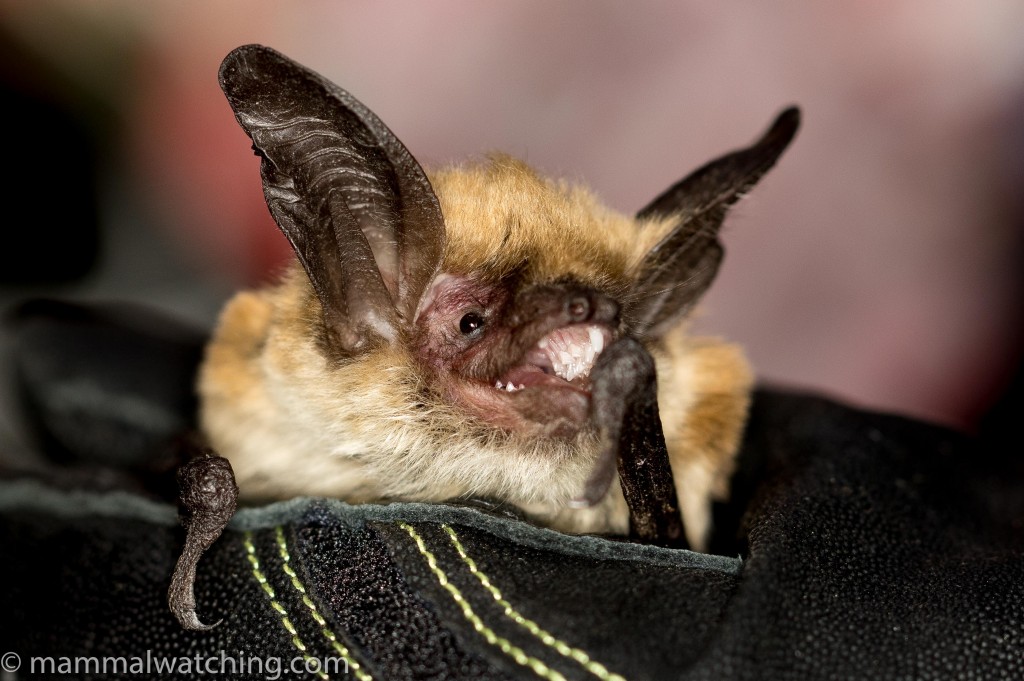
Long-eared Myotis, Myotis evotis
Long-eared Myotis are another impressive species.

Hoary Bat, Lasiurus cinereus
I didn’t photograph the lone Brazilian Freetail we caught, but everyone wanted pictures of this Hoary Bat. Such a great species: its hissing vocalisations almost as impressive as it patterned fur.
But the best species that night was surely this Allen’s Big-eared Bat, the only one of the trip and a species Carol had been specifically targetting here. A striking bat, and the curious lappets across the top of the animal’s eyes are distinctive.
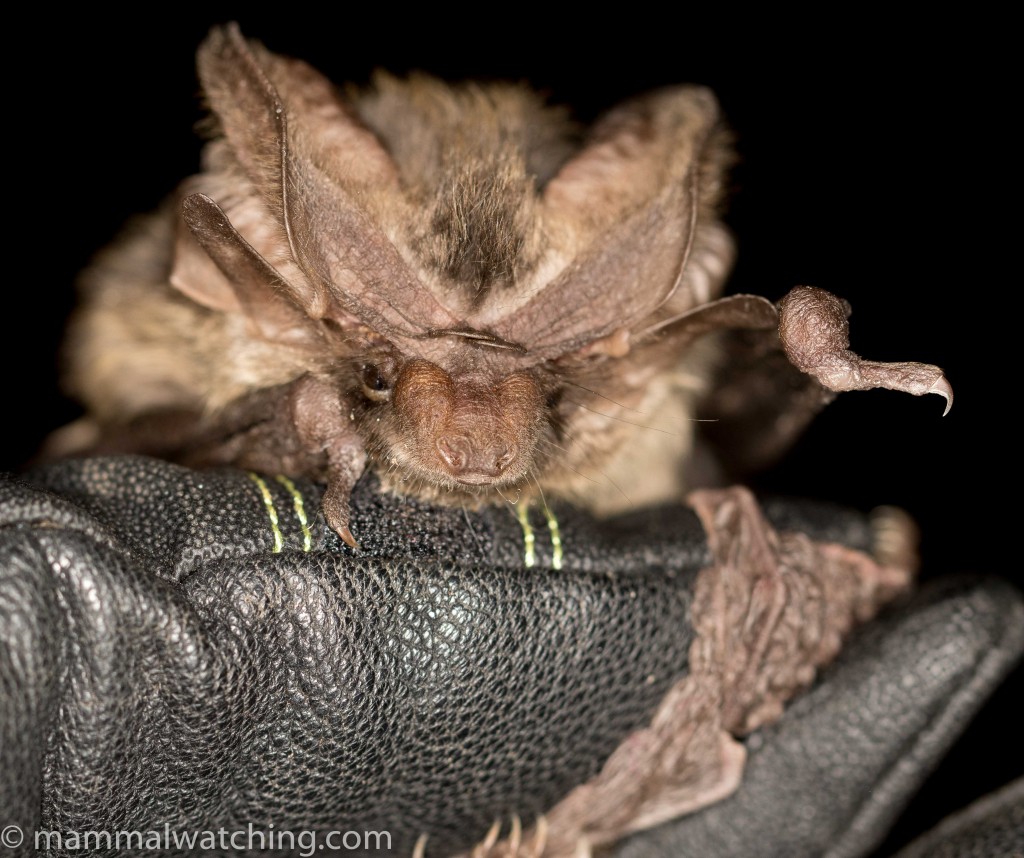
Allen’s Big-eared Bat, Idionycteris phyllotis
Meanwhile Charles and Jose had set up their own portable bat studio, releasing bats into a wooden box to capture in-flight shots of them as they emerged.
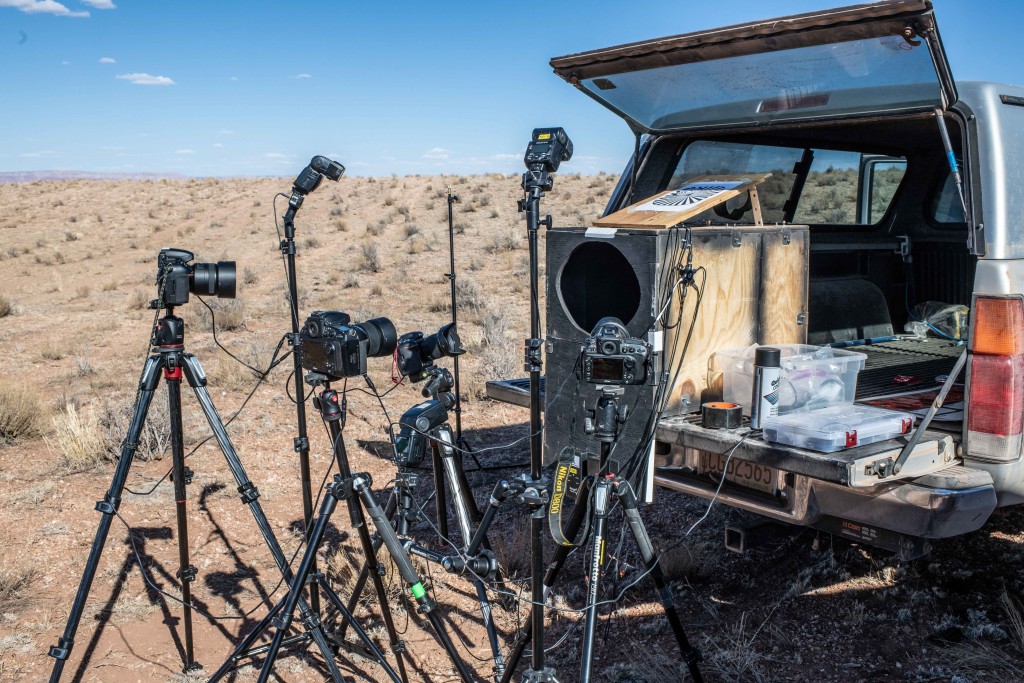
Bat studio. Photo Charles Hood
They got some very impressive results.
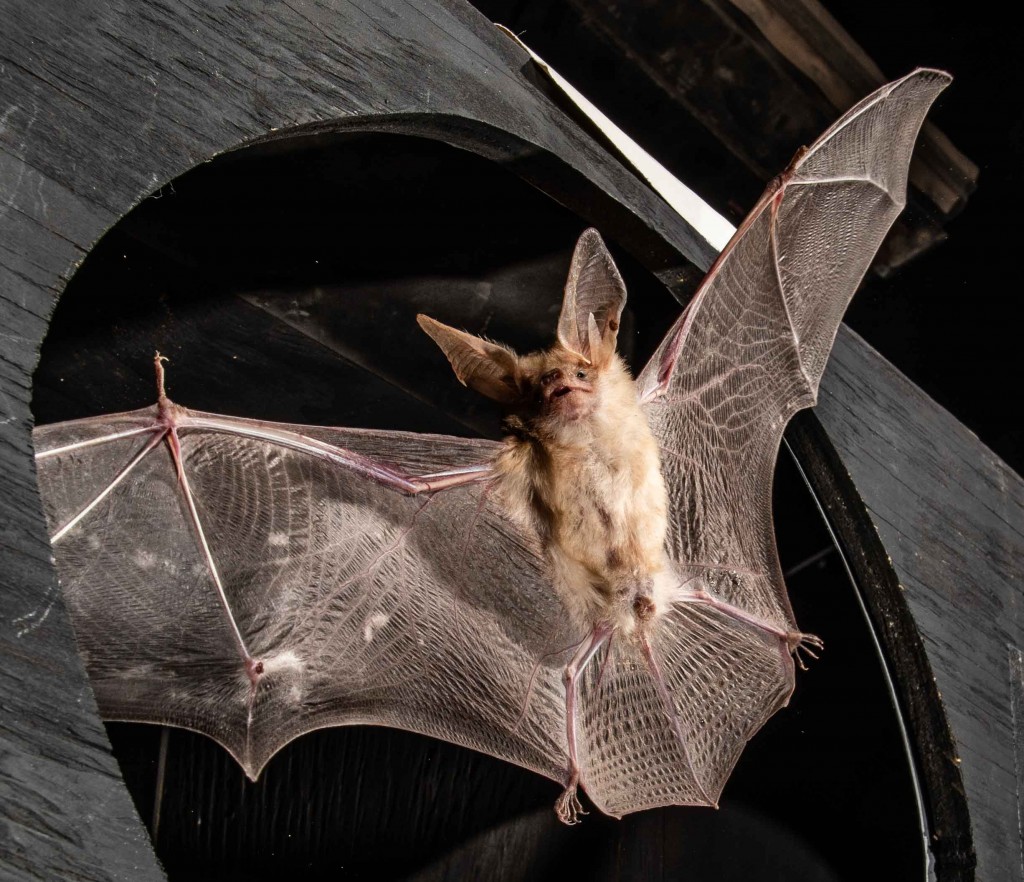
Pallid Bat, Antrozous pallidus. Photo Charles Hood.
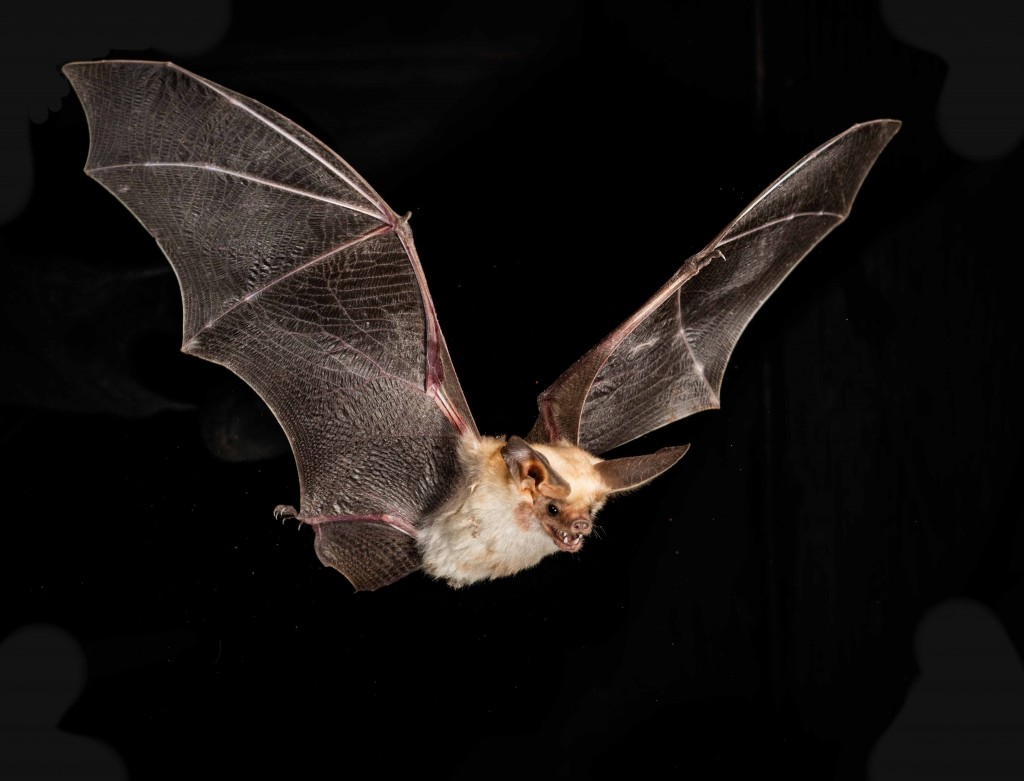
Pallid Bat, Antrozous pallidus. Photo Charles Hood.
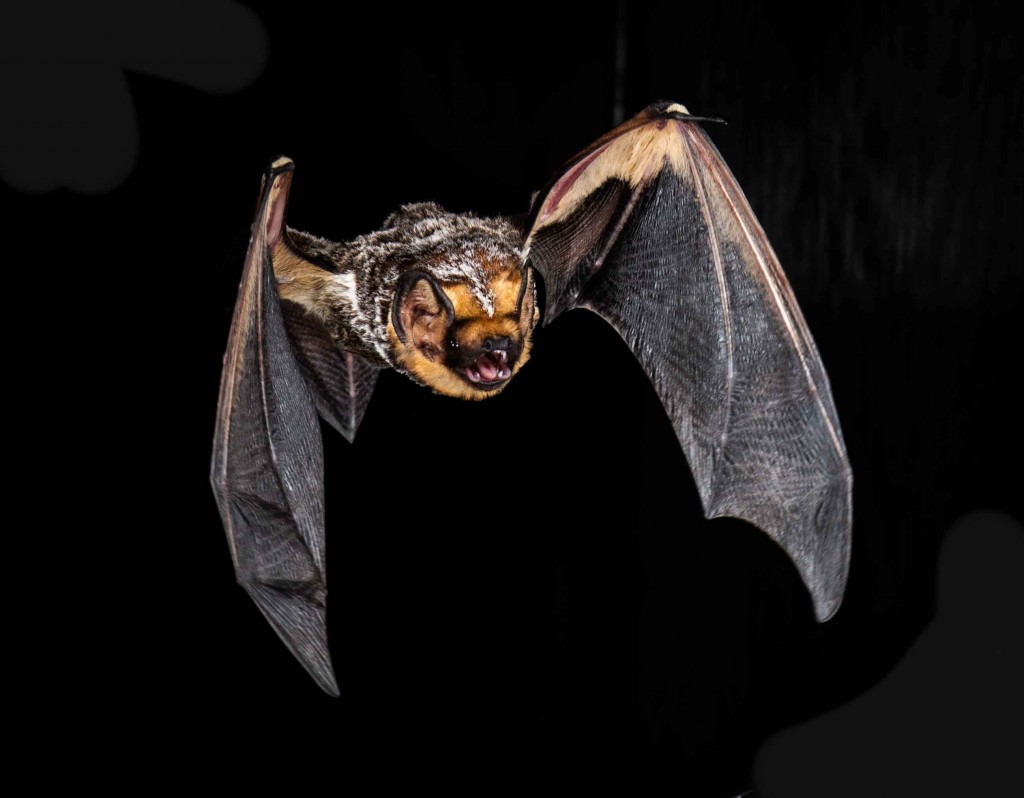
Hoary Bat, Lasiurus cinereus. Photo Charles Hood.
I didn’t see many other mammals around Flagstaff, other than several Elk on the way to the netting site, and a couple of Mogollon Voles that Jose Gabriel helped me find in long grass along a creek at Kachina Village here. There are Mexican Woodrats here too but we couldn’t find any. Patrick spotted a Gunnison’s Prairie Dog along East Butler Avenue (where I40 crosses over it) downtown, and Steve Morgan saw an Abert’s Squirrel in the garden of the AirBnB on North Spyglass Way.
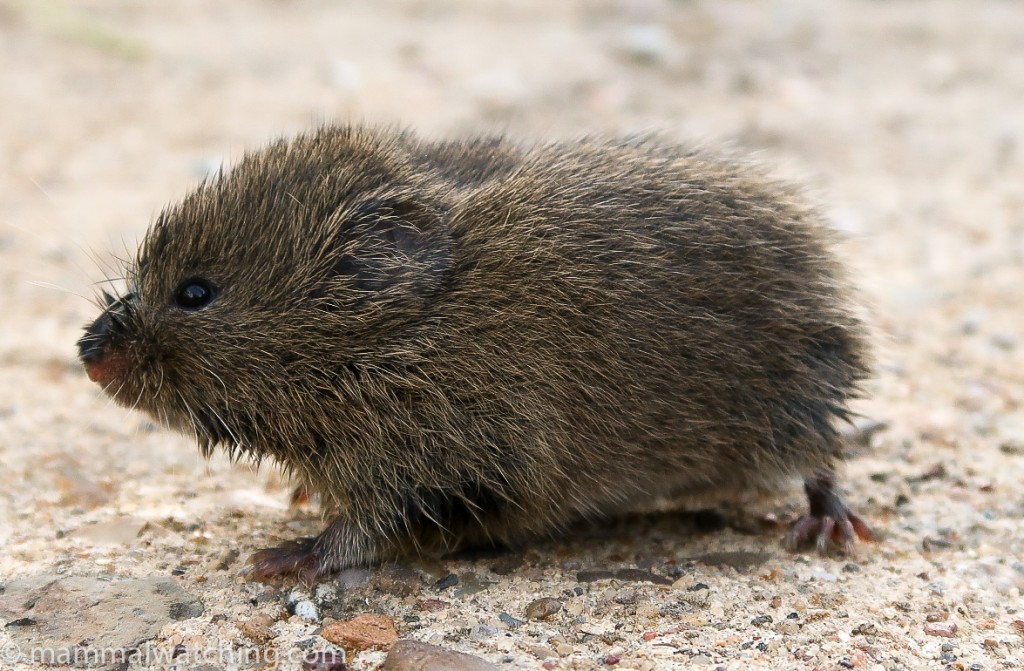
Mogollon Vole, Microtus mogollonensis
Vermillion Cliffs
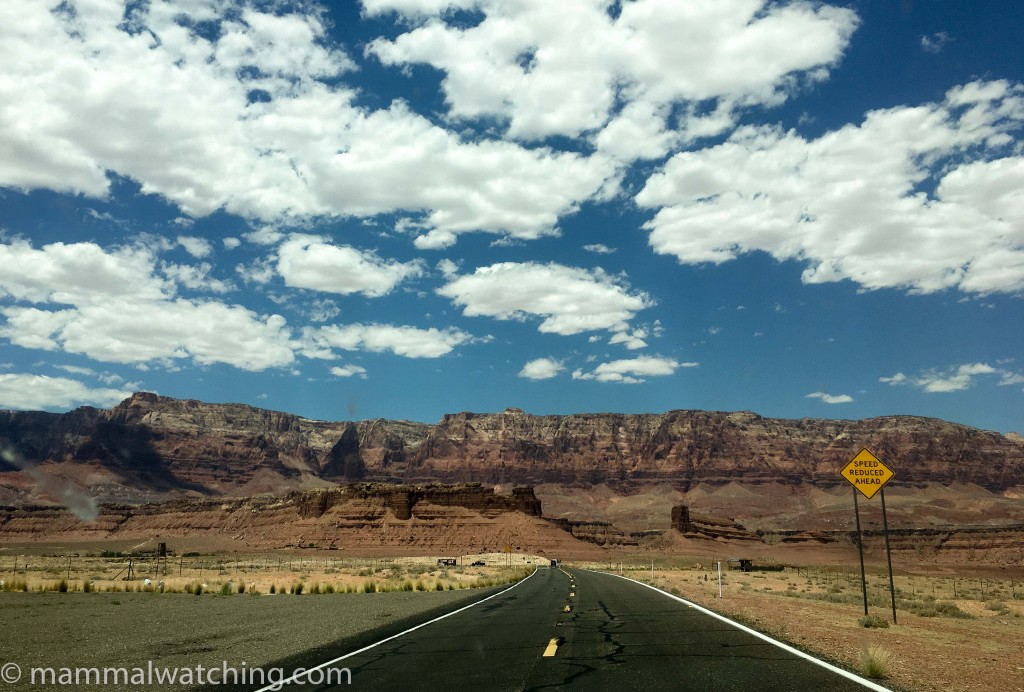
Route 89a
The next two night’s batting was close to Vermillion Cliffs National Monument along Route 89a north of Flagstaff. The stretch of highway between Bitter Springs and the national monument has superb scenery. Patrick was told by me – at least once every five minutes – “Look Patrick. Look. Its fantastic”. It was almost enough to persuade the poor boy to divert his gaze from the game he was staring at. Almost.
The two netting sites, both small ponds full of – and surrounded by – cow crap, were rather less inspiring than the scenery.
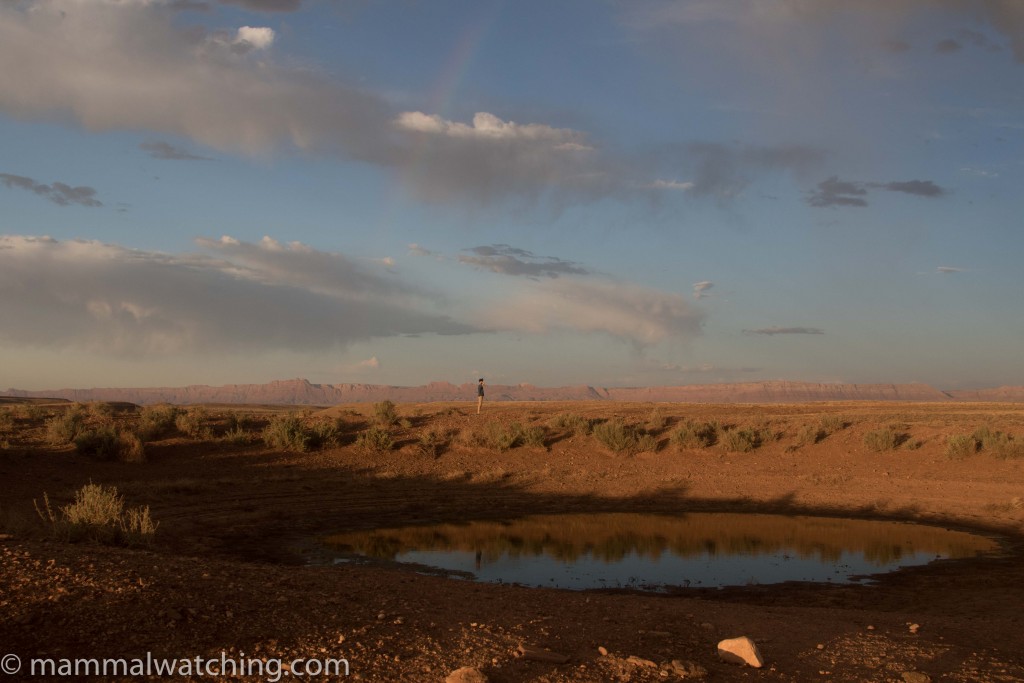
Netting site
Though the evening clouds (signalling the build up to much overdue rain) added some extra drama to the landscape.

Patrick
The batting here on both nights was slower than the first night. We caught 56 animals and 33 animals over the two evenings, comprising 6 and 5 species. Tiny Canyon Bats (Western Pipistrelles) dominated the first evening and there were dozens skimming our heads from well before sunset.
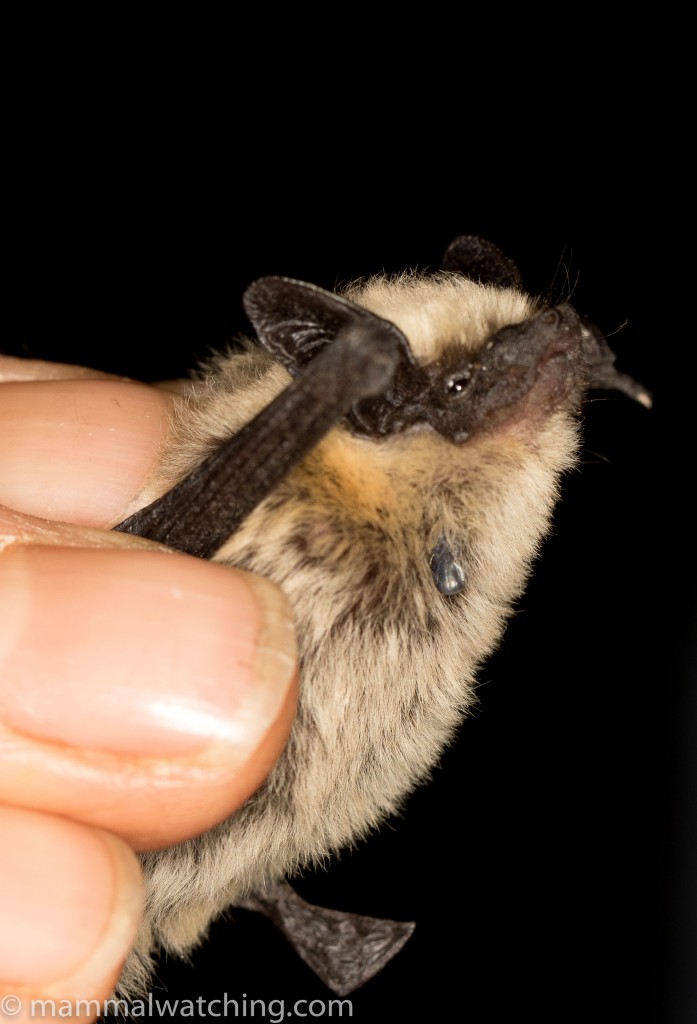
Canyon Bat, Parastrellus hesperus
The picture from Charles (below) shows how tiny these bats are.
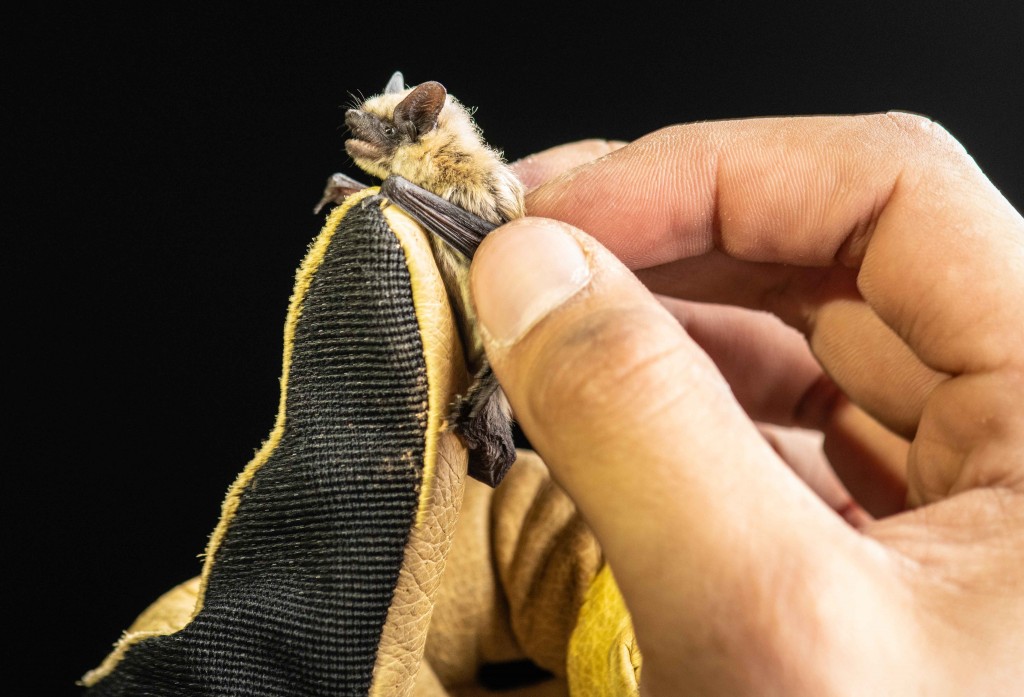
Canyon Bat, Parastrellus hesperus. Photo Charles Hood.
California Myotis dominated the second evening.
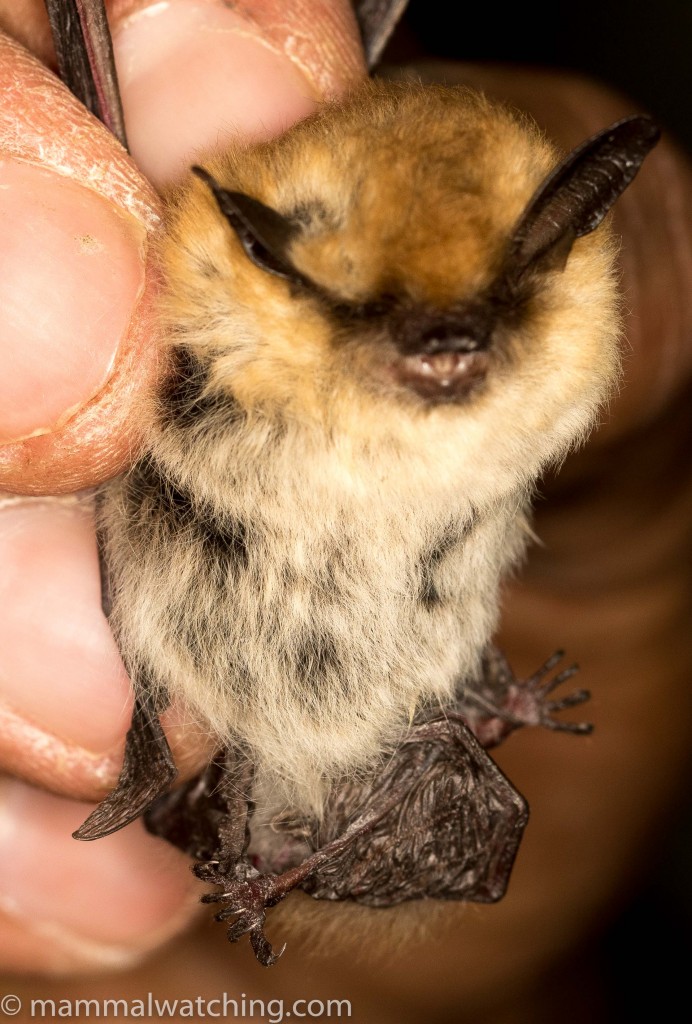
California Myotis, Myotis californicus
Though Carol had caught Spotted Bats quite often at both locations, and we heard them close to the nets both nights, we weren’t lucky. The best bats for me were the impressive Big Free-tailed Bat. We caught three on the first evening which was exciting: this was a species that Carol thought we would be quite unlikely to catch. And yes, another lifer for me.
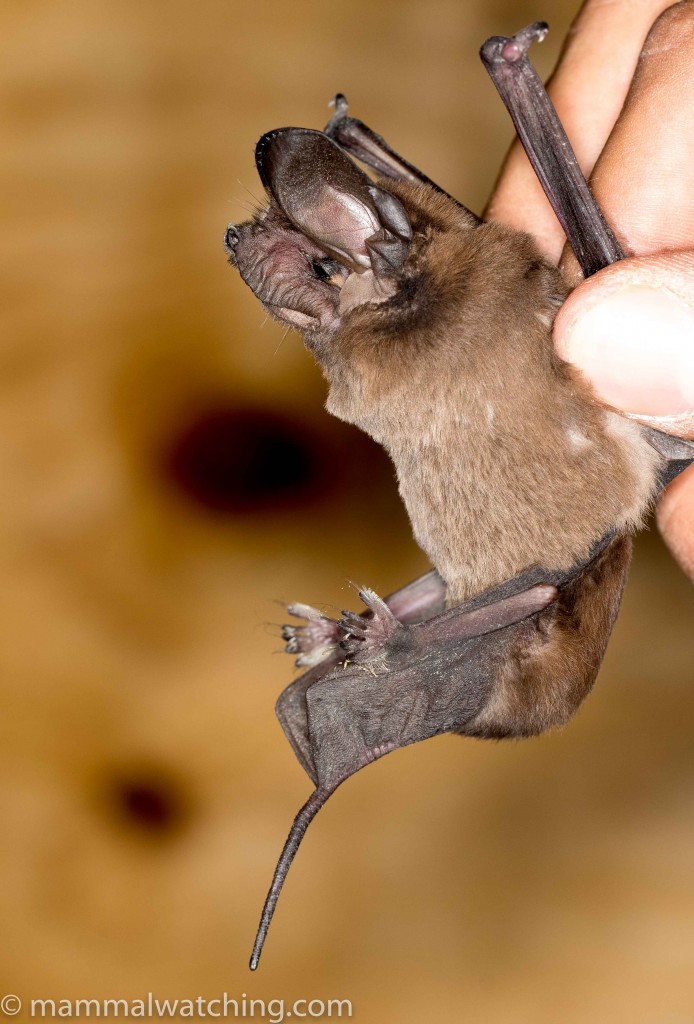
Big Free-tailed Bat, Nyctinomops macrotis
In between the bats there was plenty of time to enjoy some of the most spectacular starscapes I’ve ever seen.
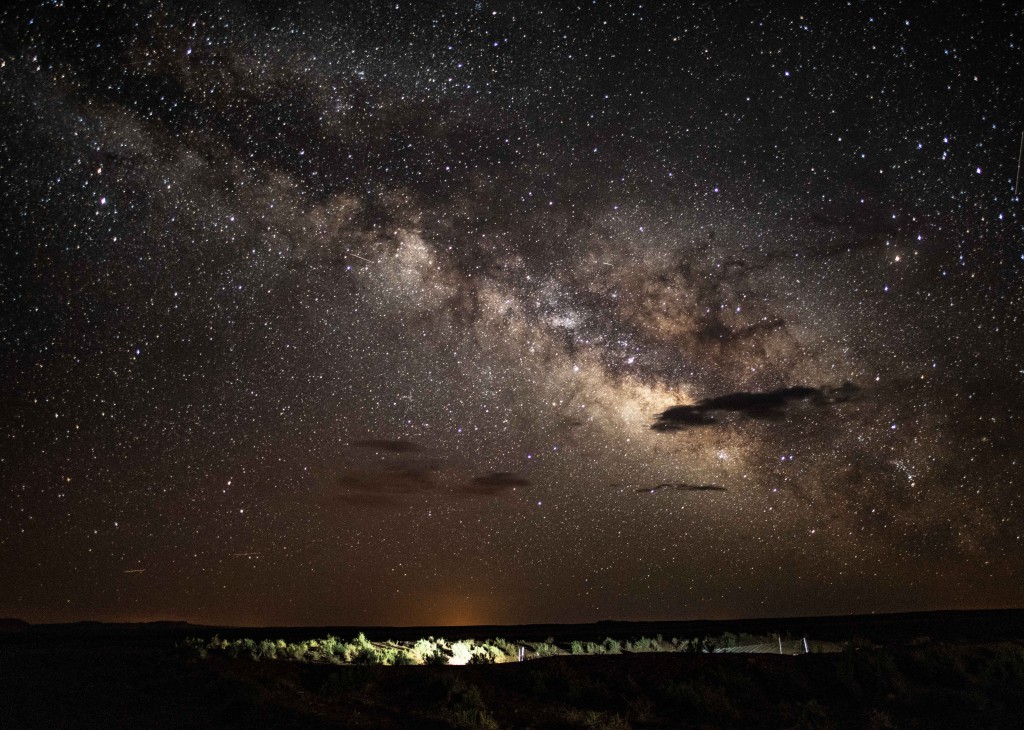
Milky Way. Photo Charles Hood
One of the group saw what sounded like a Long-tailed Pocket Mouse close to the nets. But the only mammals I saw were several Black-tailed Jackrabbits. We did though see a Badger both nights on the drive out. Jose and I gave chase to this one to ensure it stuck around long enough for everyone to see. They can move pretty quickly when they need to and even the fearless Jose resisted the impulse to try to pick it up.
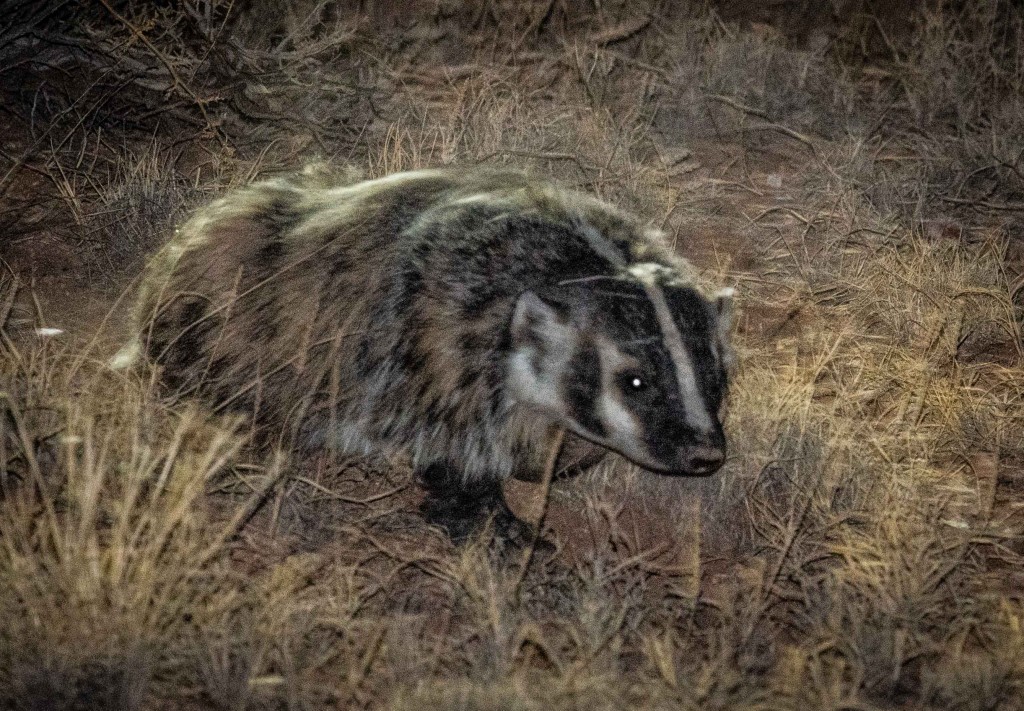
American Badger, Taxidea taxus. Photo Charles Hood.
Surprisingly I only saw a single kangaroo rat on the drives home each night: most likely an Ord’s Kangaroo Rat. Chisel-toothed Kangaroo Rats are also in the area, though presumably on rockier ground.
The Honeymoon Trail – that starts from next to Cliff Dweller’s Motel up a shaded gorge with a trickle of water – seemed like a good place to try to catch rodents. There was plenty of evidence of wood rats along here, but all I caught were a few Canyon Mice.
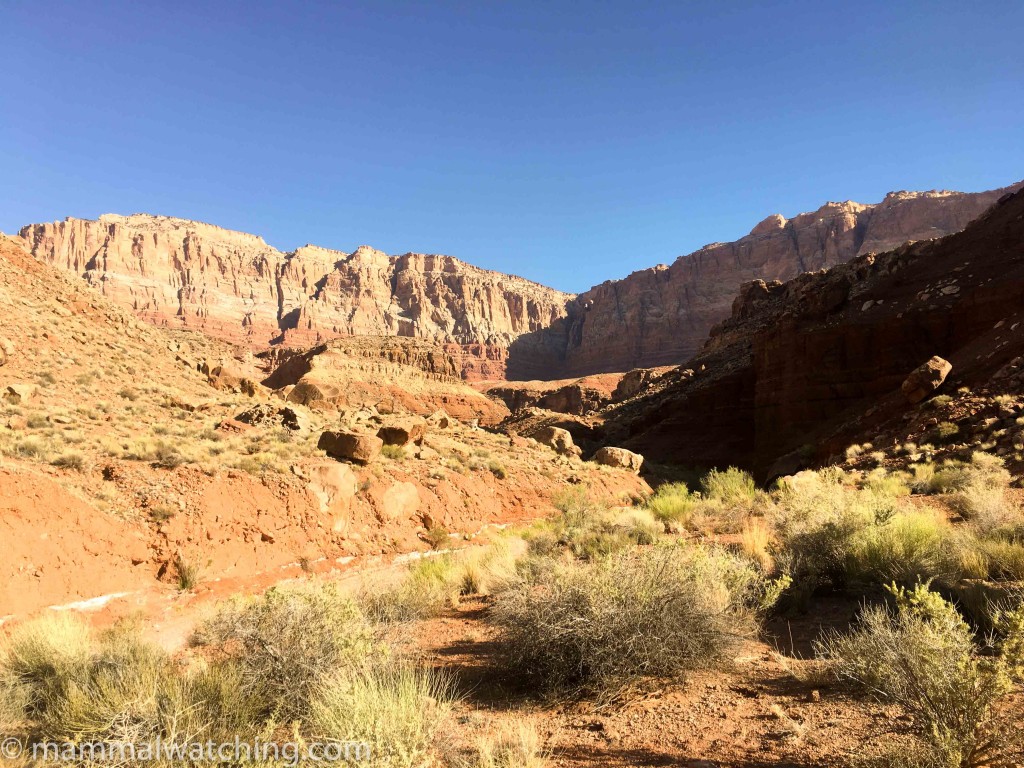
Canyon Mouse habitat
Canyon Mice are quite small, with long furred tails and large ears.
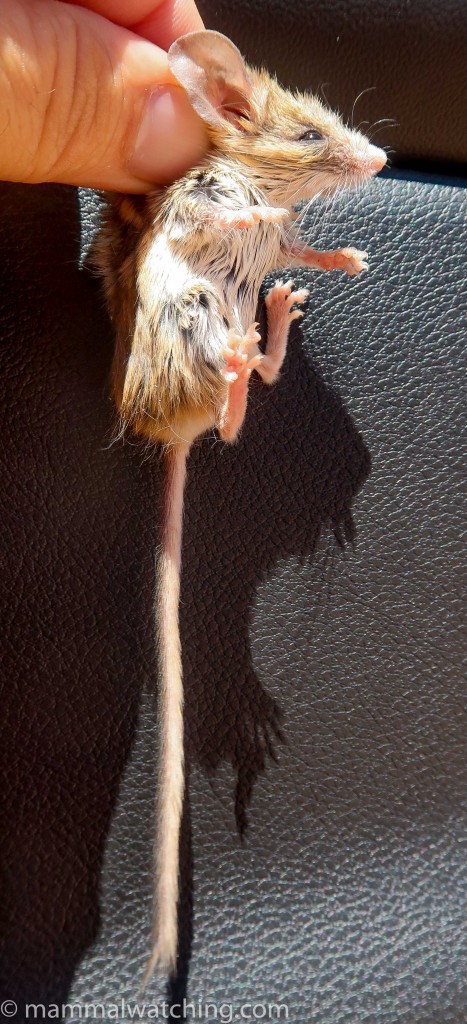
Canyon Mouse, Peromyscus crinitus
White-tailed Antelope Squirrels were very common in and around Cliff Dwellers Motel.
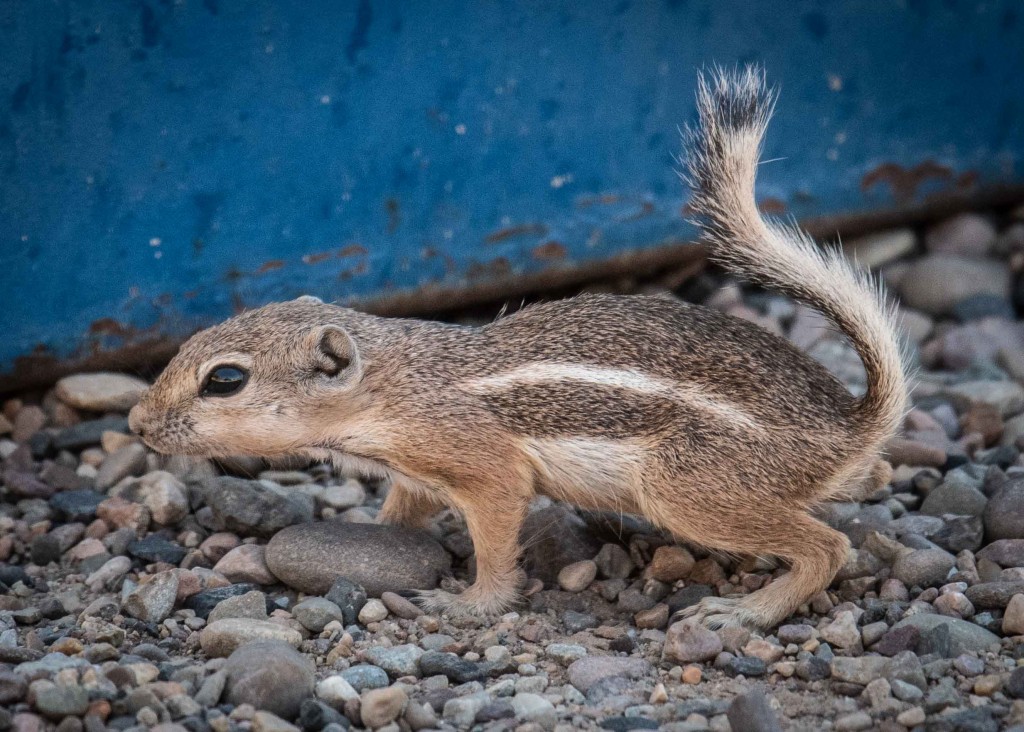
White-tailed Antelope Squirrel, Ammospermophilus leucurus. Photo Charles Hood.
Kaibab Plateau
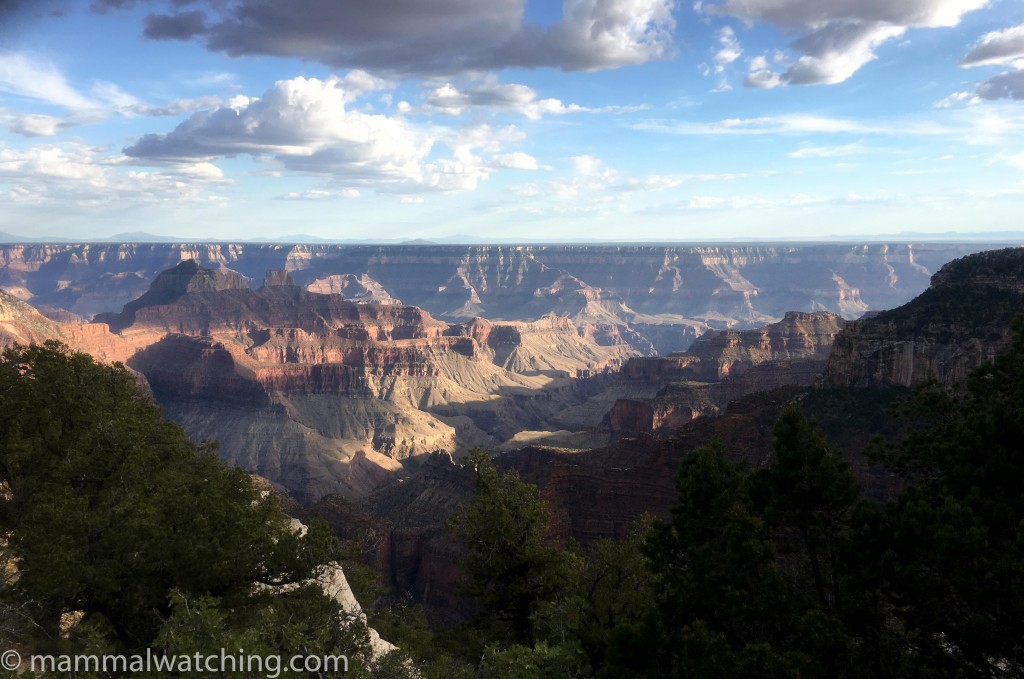
North Rim, Grand Canyon
On day four, with still no Spotted Bats, I was trying to manage my stress levels, already in the danger zone after watching the England Colombia World Cup penalty shootout. But, ever since I’d first heard about Spotted Bats, I’d imagined I would see one on the Kaibab Plateau, next to the North Rim of the Grand Canyon. And that was the destination for our last night. I was cautiously optimistic.
We spent a few hours that afternoon poking around the plateau. Venkat and Hari Sankar spent the morning there too, and shared directions for a spot where they had seen the newly split Fremont’s Squirrel (a split from the Red Squirrel). It took less than three minutes to find one in the forest at the edge of a meadow on the west side of Route 67, between Jacob Lake and the North Rim of the Grnad Canyon, at mile marker 596.
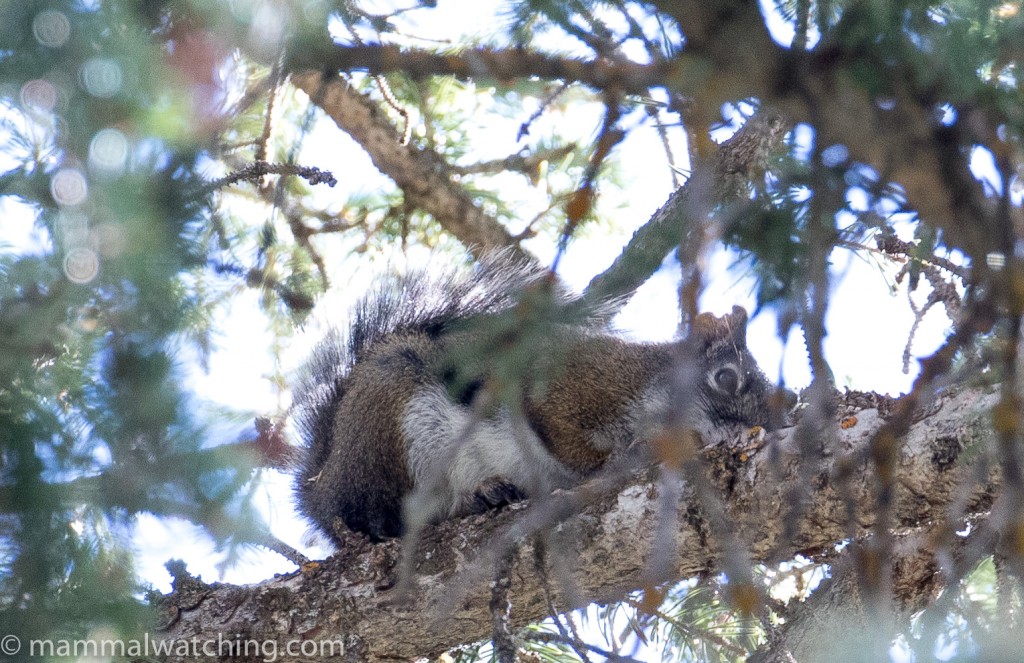
Fremont’s Red Squirrel, Tamiasciurus fremonti
Happy with my lifer squirrel we argued over chipmunk IDs at Jacob’s Lake and around the North Rim of the Grand Canyon. Most appeared to be Uinta Chipmunks though Colorado Chipmunks ought to be around here too.
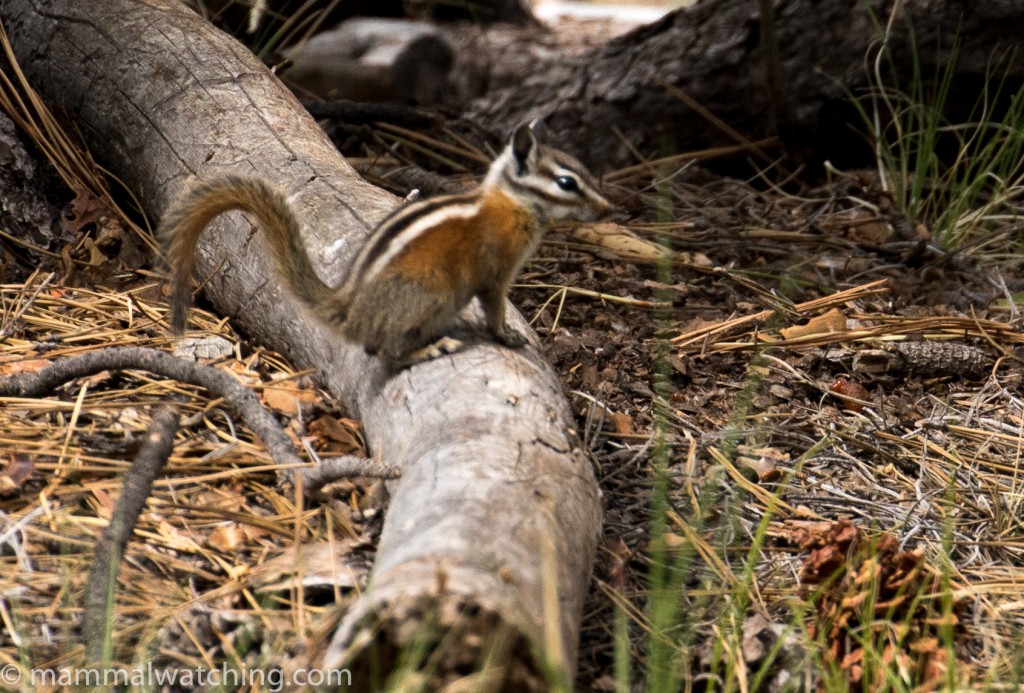
Uinta Chipmunk, Tamias umbrinus
We couldn’t find an Abert’s Squirrel, though Venkat had scored earlier in the day in the campsite at the north rim. But it was impossible to miss the Bison, just past the national park entrance gates: the herd were introduced here at the very start of the 20th century.
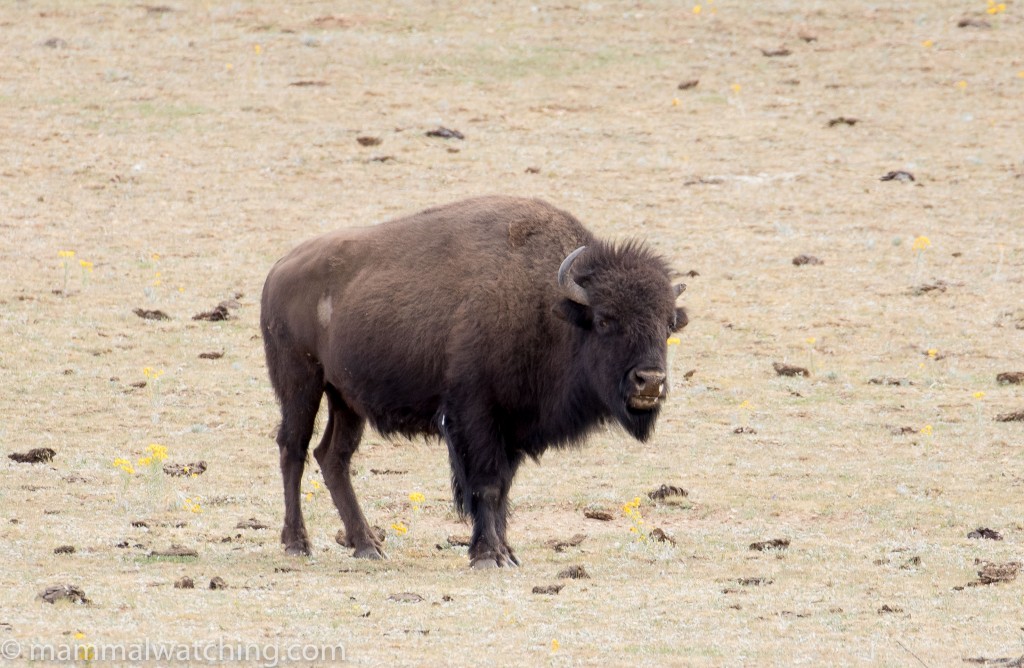
Bison, Bison bison
The only other mammals that afternoon were a Rock Squirrel in the forest, and many Mule Deer and Elk along the road from the national park to Jacob’s Lake.
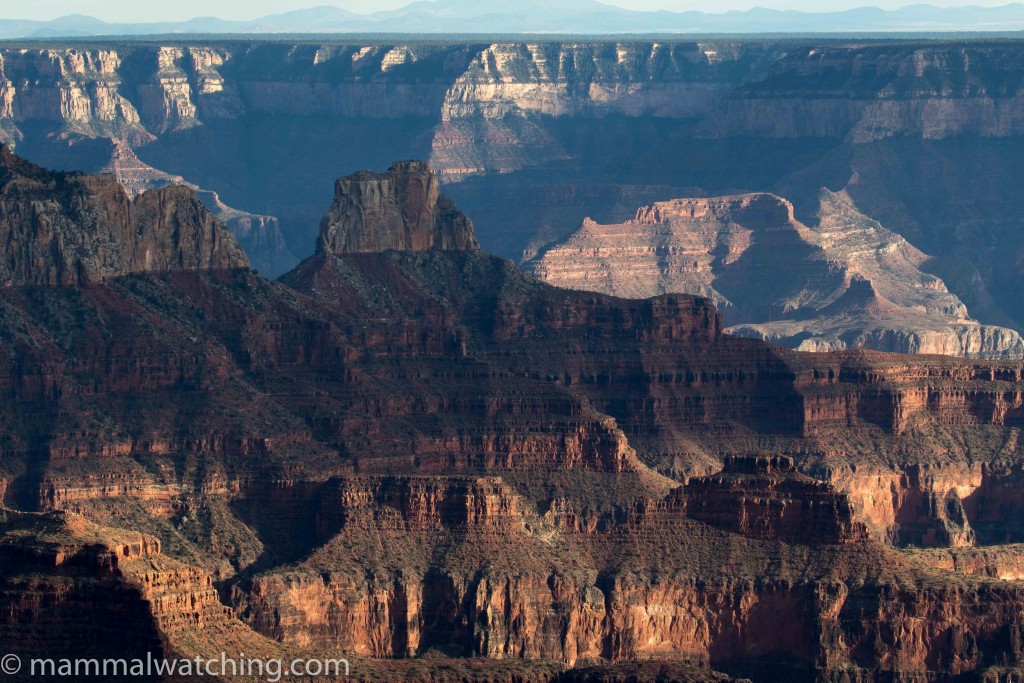
North Rim Grand Canyon
After the obligatory 20 minutes gawping at the Grand Canyon, we returned to meet Carol and the crew near Jacob’s Lake for the evening’s netting over a pond in a pine forest meadow. Carol had warned us all how cold it can get at night up here: she has caught Spotted Bats flying in summer temperatures around freezing. And though the previous nights had barely warranted a jacket, tonight – up at over 8000 feet – quickly cooled down.
There was only one likely new bat left for me to see: Long-legged Myotis. And, as promised, we caught many.
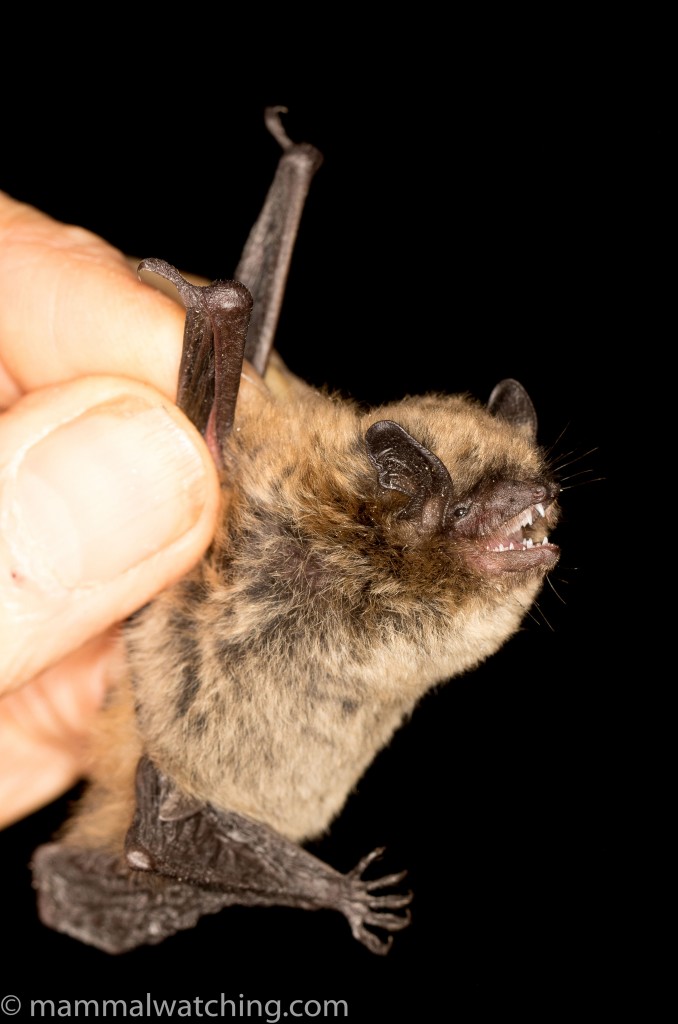
Long-legged Myotis, Myotis volans
The keeled calcar – the small flap – on the tail membrane just above the foot is distinctive for this species.
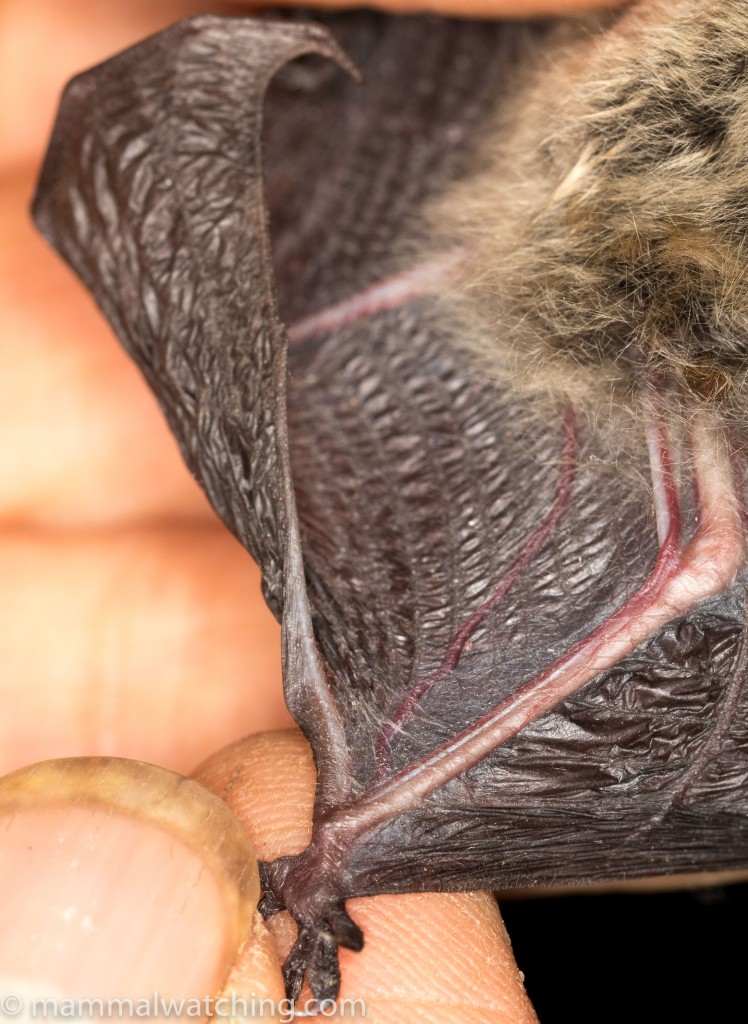
Long-legged Myotis, Myotis volans
The team caught 150 bats that night, with almost 60 Big Brown Bats and over 50 Long-eared Myotis. The only other new species for the trip were a few Western Small-footed Myotis, confirmed from an analysis of their echolocation calls on release. This is a species we thought we might have caught earlier on but which is extremely difficult to distinguish from California Myotis in the hand.
By 11.30 – with temperatures below 10C -we were getting cold, tired and restless. The air was heavy with the audible calls of echo-locating bats: we could hear the very loud metallic chink of Western Bonneted Bats and (slightly quieter) chinks of Big Free-tailed Bats continuously. And every now and again we could hear the geiger-counter clicks of Spotted Bats.
We were keeping our distance from the pond, anxious not to spook any Spotted Bat from the nets, as they seem very sensitive to noise and light. Carol had told us that there were a bunch of Spotteds feeding over the pond and she hoped that they would soon decide to drink. But would we catch one?
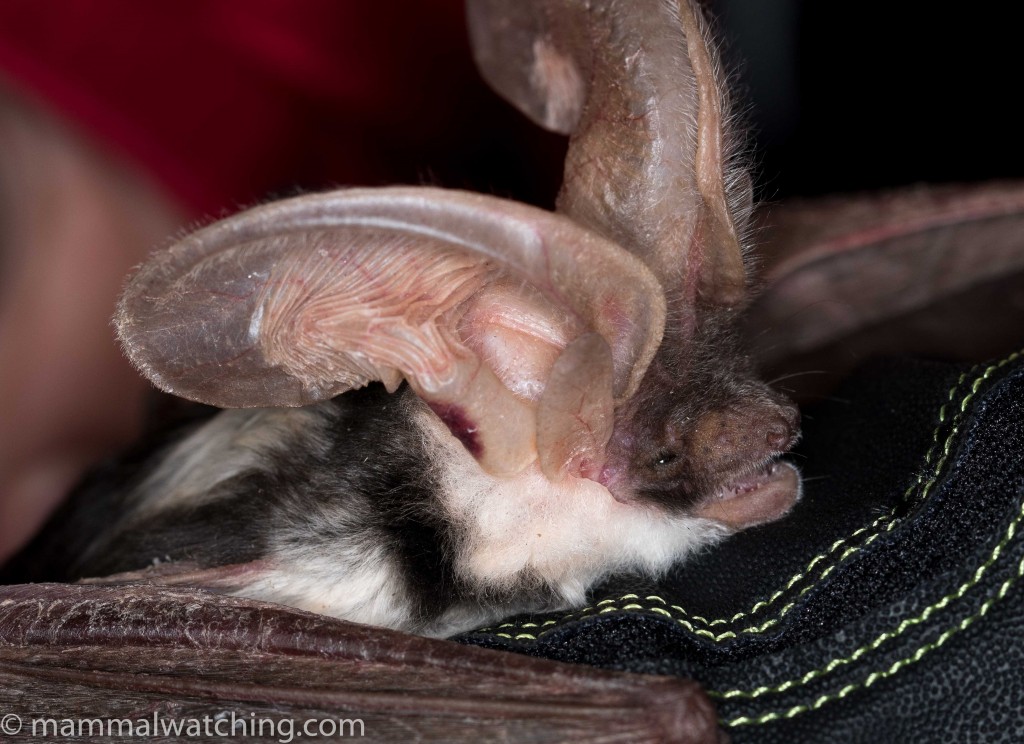
Spotted Bat, Euderma maculatum
Just before midnight she wandered over nonchalantly to ask how much longer we wanted to give it. “Until dawn” I said. “No need” she said. “We have two!”. I’m pretty sure the rest of the group were trembling as much as me as she – painstakingly slowly – produced two animals for a brief photo opportunity. These are truly spectacular bats and not just for the black and white markings.
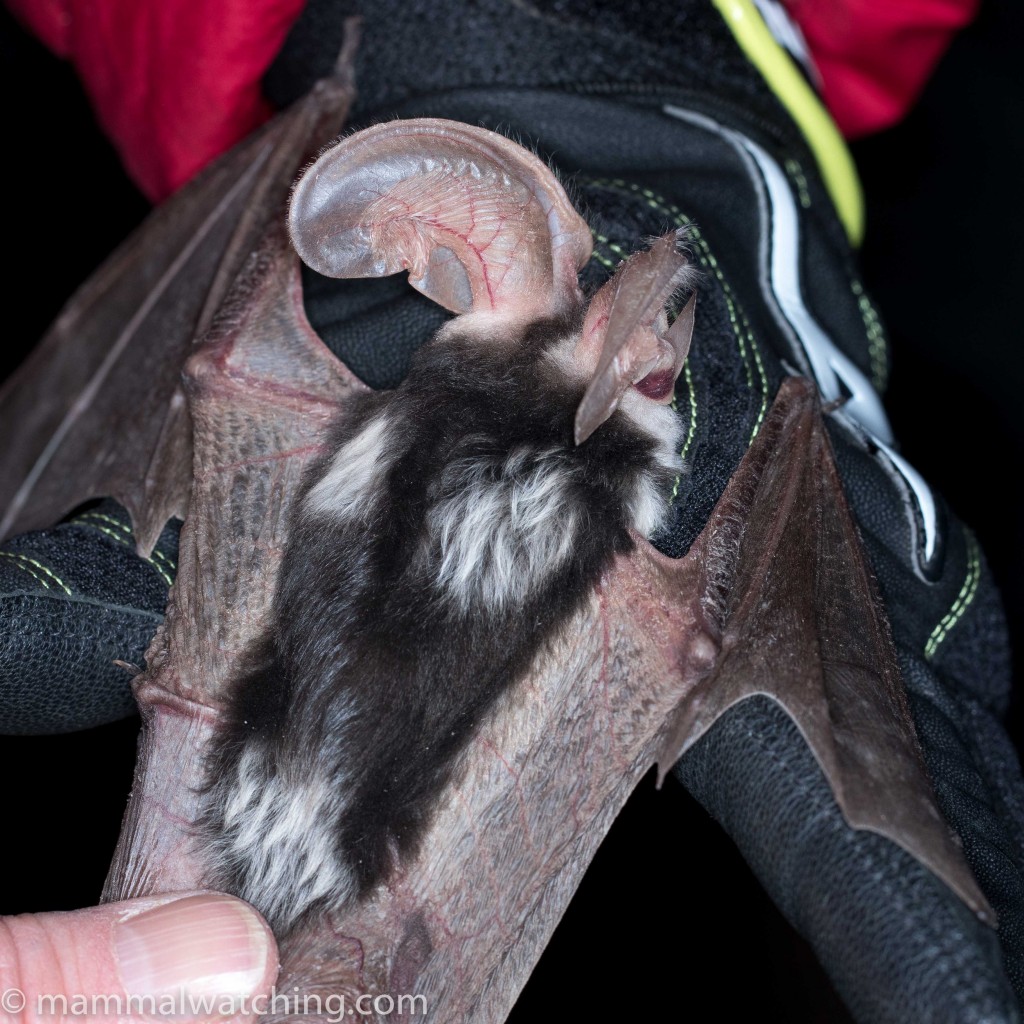
Spotted Bat, Euderma maculatum
It was very cold and five minutes later were at the pond to release the animals, and watched them flutter away moth like into the night. The perfect end to a fabulous trip.
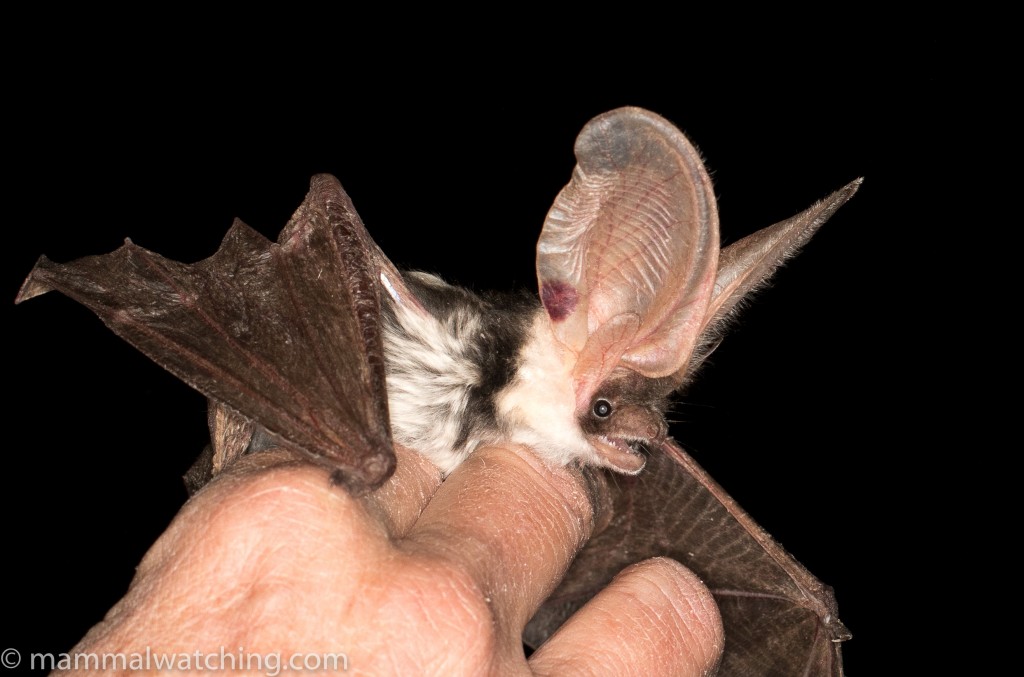
Spotted Bat, Euderma maculatum
Thank You
A very big thanks to Fiona Reid for all her logistical organisation, humour, patience and industrial quantities of sandwich fillings. Thank you again to the batting crew – Sybill Amelon, Clarissa Starbuck, Jose Gabriel Martinez and Bill Noble – for a lot of hard work wading through muddy ponds. They made sure we got decent looks at every species, no mean feat when you are in the thick of processing a hundred captures in an evening. Thanks also to Charles Hood and Jose for sharing their photos with us all. And a very big thanks to Carol Chambers for masterminding the bat catching, allowing us to share in her expertise, and getting me so many new species.
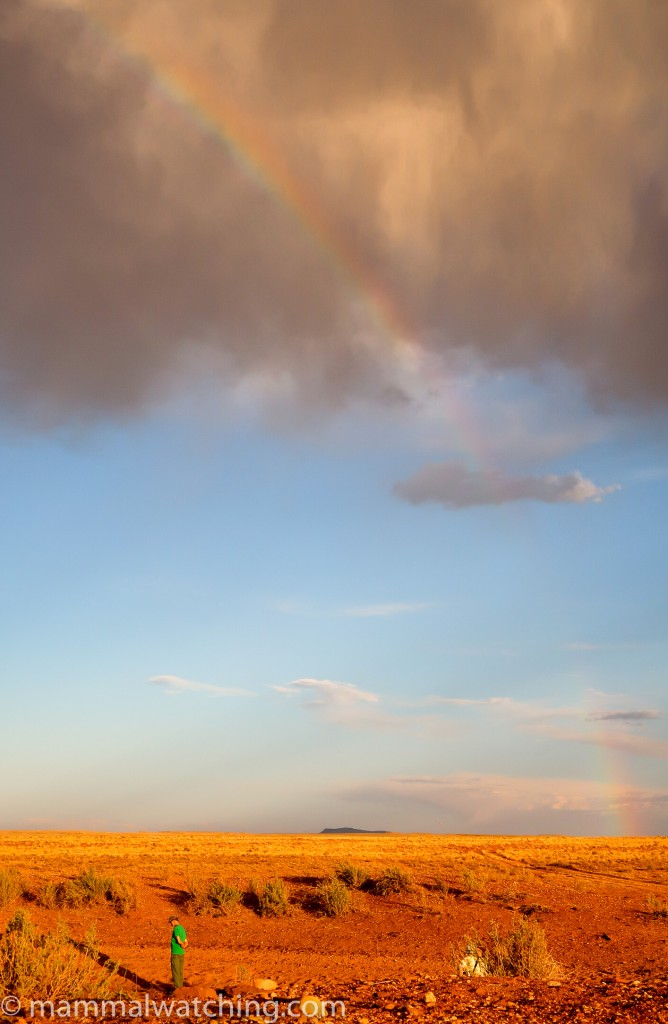
Desert Rainbow
Trip List
Black-tailed Jackrabbit Lepus californicus
Desert Cottontail Sylvilagus audubonii
Variegated Ground (Rock) Squirrel Otospermophilus variegatus
Round-tailed Ground Squirrel Xerospermophilus tereticaudus
White-tailed Antelope Squirrel Ammospermophilus leucurus
Gunnison’s prairie dog Cynomys gunnisoni
Uinta Chipmunk Neotamias umbrinus
Fremont’s Squirrel Tamiasciurus fremonti
Canyon Deer Mouse Peromyscus crinitus
Arizona Cotton Rat Sigmodon arizonae
Mogollon Vole Microtus mogollonensis
Ord’s Kangaroo-Rat Dipodomys ordii
American Badger Taxidea taxus
Northern Raccoon Procyon lotor
Mexican Free-tailed Bat Tadarida brasiliensis
Big Free-tailed Bat Nyctinomops macrotis
Pallid Bat Antrozous pallidus
Spotted Bat Euderma maculatum
Allen’s Big-eared Bat Idionycteris phyllotis
Canyon Bat Parastrellus hesperus
Big Brown Bat Eptesicus fuscus
Hoary Bat Lasiurus cinereus
Arizona Myotis Myotis occultus
Long-legged Myotis Myotis volans
Yuma Myotis Myotis yumanensis
Southwestern Myotis Myotis auriculus
Long-eared Myotis Myotis evotis
Fringed Myotis Myotis thysanodes
California Myotis Myotis californicus
Western Small-footed Myotis Myotis ciliolabrum
Silver-haired Bat Lasionycteris noctivagans
Pronghorn Antilocapra americana
Wapiti Cervus canadensis
Mule Deer Odocoileus hemionus
American Bison (Buffalo) Bison bison
35 SPECIES, 11 lifers (in bold)
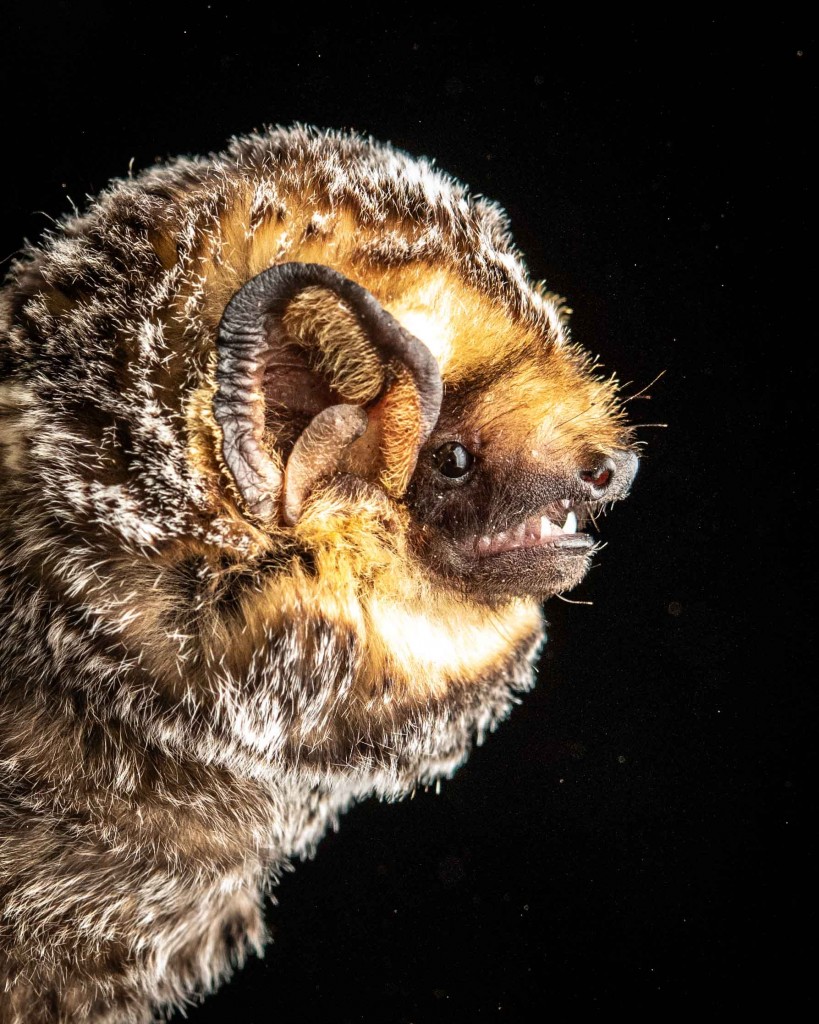
Hoary Bat, Lasiurus cinereus. Photo Charles Hood.


JoEllen Arnold
Superb trip report from an excellent trip! Thank you for putting it together so well.